From the history of own names of aircraft of Russia, 1885-1917 years
Russia, following the example of France, at the end of the XVIII century embarked on the path of developing the airspace by means of aircraft1. But due to insufficiently developed textile and chemical production, for many years the state was forced to use foreign-built aircraft. The situation has not changed with the start of construction of the domestic Air fleet. In this regard, the military department recognized the need to purchase balloons and other required property abroad. Soon, the armed forces of the Russian army received personalized balloons "Falcon" и "Eagle" (volume up to 1000 m3) acquired for this purpose in France2. Later balloon "Eagle" was rejected by the commission for the use of aeronautics, pigeon mail and guard towers for military purposes3 due to constant gas leakage. The other fate was in the balloon "Falcon". Summer 1885 on the Volkov field4 (St. Petersburg) there were conducted training upgrades with the participation of the first persons of the specified Commission (Major General MM Boreskov5 and N.P. Fedorov6), as well as the aeronautical frame officers. In October of the same year, the balloon "Falcon"made a flight from the capital to the city of Novgorod. This was the beginning of free flights in Russia. On this occasion, the Minister of War on the report of the inspector general for the engineering part of Lieutenant General K.Ya. Zverev7 about the prosperous flight of Russian aeronautics, the following resolution was imposed:“Congratulations on the start and success. God grant that this will develop in our country quickly and well for the benefit of Russia and the glory of our army and its troops in aeronautics. .. "8.
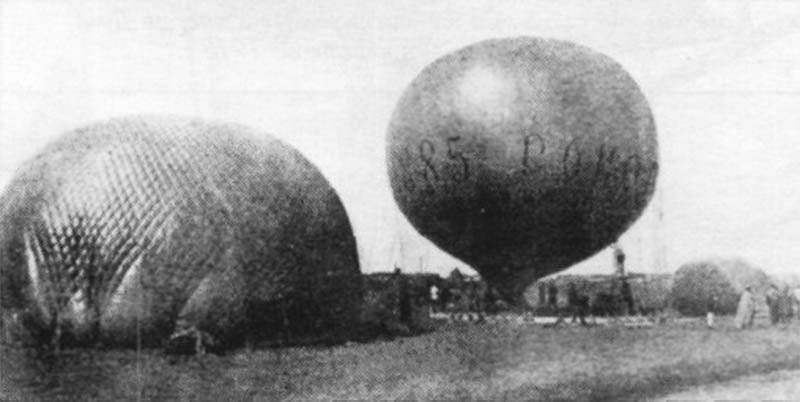
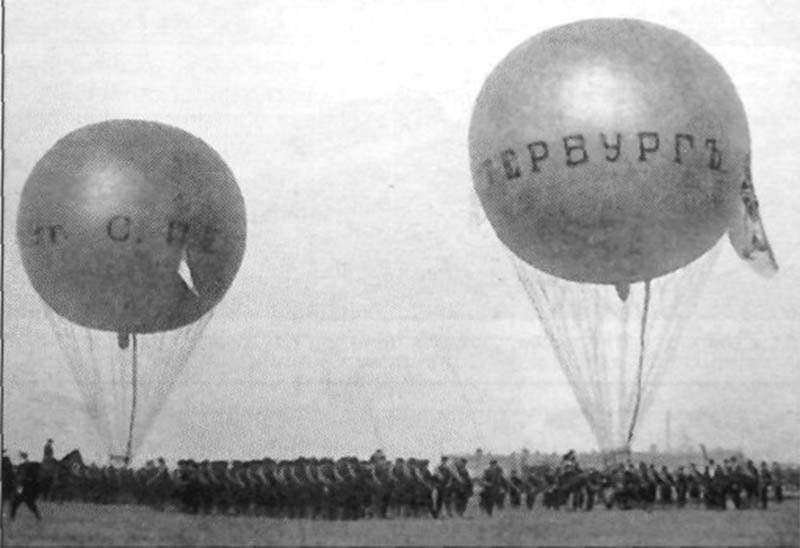
Successful steps in the development of aeronautical business aroused genuine interest in Russian society. Of particular importance began to acquire personalized aircraft. According to many military aeronauts, their names should have been exclusively of domestic origin. Already in 1886, the balloon used in military maneuvers near the city of Brest-Litovsk (Brest) was named "Russian". Its author was a permanent member of the Commission, Lieutenant Colonel N.A. Eagles9. The patriotic impulse of the Russian officer was supported by the engineering department, and already in June 1887, the War Minister approved the decision of the Commission on the use of aeronautics to assign names for each balloon of the Russian army to the names of birds.
From the report of Lieutenant-General K.Ya. Zverev to the Minister of War P.S. Vannovsky10 on naming balloons available in the aeronautic park of 27 in May (June 8) 1887.11
... xi. Allow names to be given to the balls in the park12, and behind the ball that flew in maneuvers near Brest last year, keep the name “Russian” given to him by Lieutenant Colonel Orlov, and call the other balls with the names of various birds, such as: Eagle, Dove, Hawk, Falcon, Krechet, Kite, Berkut , Kobchik, Seagull, Swallow, Raven, etc.
Resolution of the Minister of War: “I approve, the Commission’s resolution, listed in this report, authorizes and the expenses requested. Gen.-ad. Vannovsky
In the future, in addition to the "feathered" names, the names of large cities of the Russian Empire began to appear on the shells of balloons, in which aeronautic departments were stationed, for example, "WITH. Petersburg, Warsaw etc. Outstanding commanders who played a prominent role in the development of Russian military aeronautics also received this honor: "General VanNovsky, General Zabotkin]3 and others. At the end of the Russian-Japanese war of 1904-1905. The leadership of the War Ministry concluded that aeronautics is unmatched in the air in terms of the ability to solve a wide range of tasks, flight duration and the mass of the lifted payload. This circumstance, to a large extent, made it possible to strengthen the position of aeronautics in military affairs. Meanwhile, tethered balloons and kite balloons were replaced by controlled aircraft (airships).
In 1906, the head of the Main Engineering Directorate, reporting to the Minister of War on the need to have airships in service, stressed that
“Armies equipped with such devices will have a powerful means for producing reconnaissance and may cause heavy moral damage to armies that do not have such means”14.Despite the significant backwardness of Russia in the field of aeronautics from the leading European states, the military department singled out it in a separate direction. In the coming years, airship units entered service: "Training"15The Swan16, "Merry" 17, "Dove", "Hawk", "Golden Eagle" and more As you can see, the names of the birds continued to prevail in the names of the aircraft.
Meanwhile, the country's heavenly expanses were rapidly conquering aircraft heavier than air - aircraft. Like balloons at the dawn of the emergence of military aeronautics, the first aircraft in our country were predominantly foreign models. Betting on development aviation, the military department of Russia actively formed aircraft units18, hoping to equip them with every army corps and border military fortresses. Initially, for the recruitment of squadrons, it was supposed to order abroad the most adapted for military affairs devices such as "Farman" and "Nyupor". But against the decision came the majority of Russian plants, requiring the transfer of basic orders for the assembly of aircraft. The most leading aircraft building enterprises of the country at that time were considered to be: Russian-Baltic Plant (Riga)19, Dux plant (Moscow), 1-e aeronautics association S.S. Shchetinina (St. Petersburg)20, Lomach and K0 (St. Petersburg)21, Aviata Partnership (Warsaw), St. Petersburg Arsenal, V.A. Lebedeva22 and more
Unlike airships, the first aircraft mainly used the names of aircraft factories and firms that assemble them, for example: "Dux"23, Aviata, or the names of airline owners, for example - “Yu.A. Meller24. At the same time, the aircraft had their own names - the names of famous foreign aircraft designers: Farman25, Newpore, Bleriot, Voisin, and others. The first domestic aircraft also adhered to this rule - I.I. Sikorsky26 (C-3A, -5, -6A, -16, -20), A.A. Anatra27 ("Anatra"), A.A. Anatra - E. Dean (De Kampa) (Anade), V.A. Lebedev("Swan") etc.
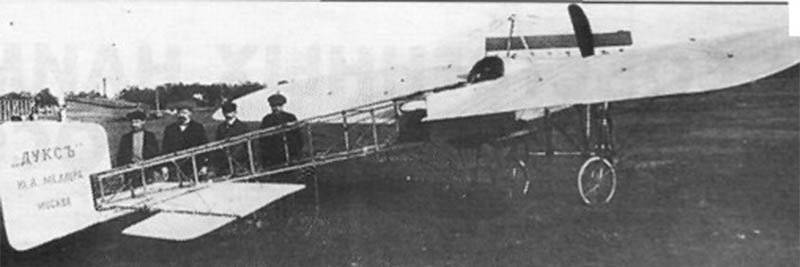
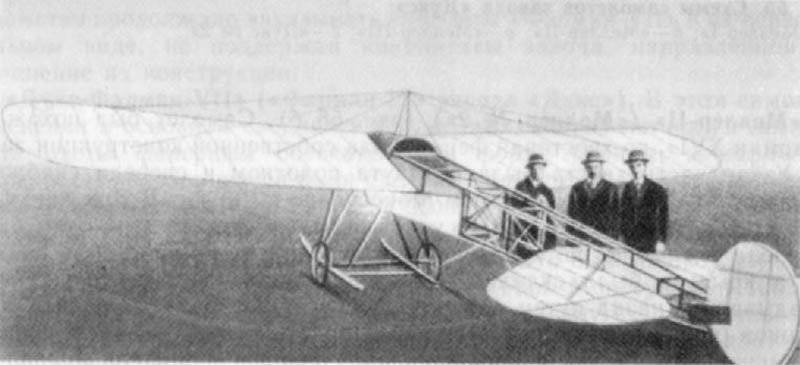
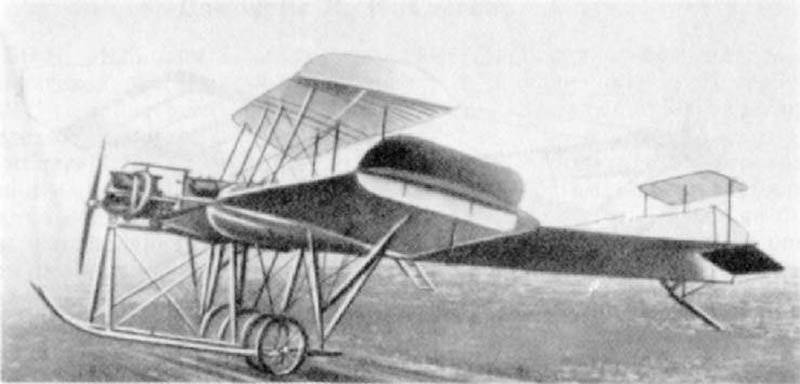
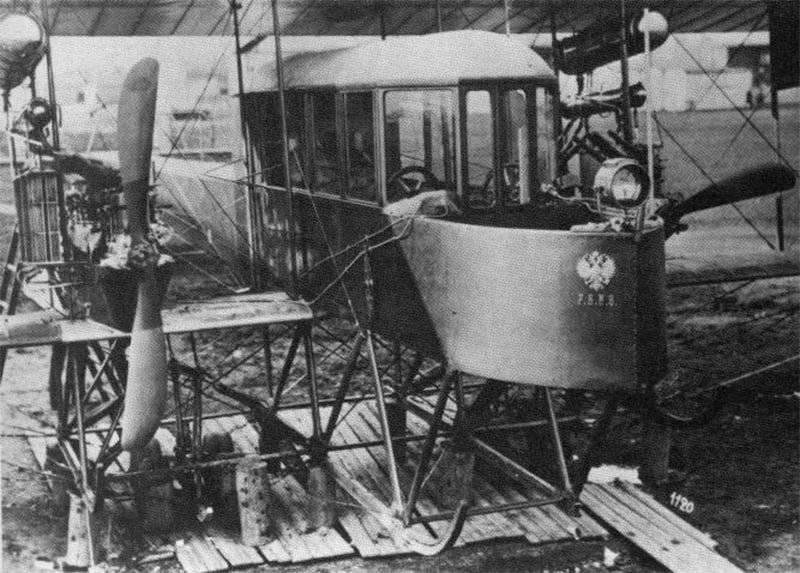
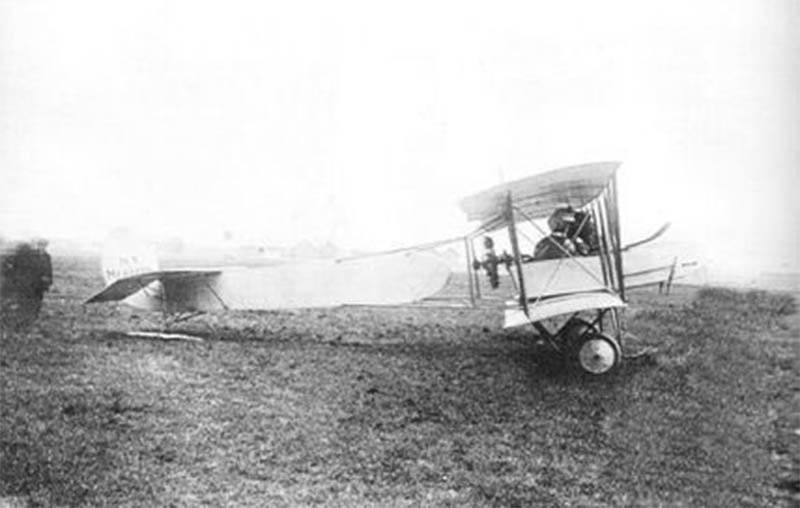
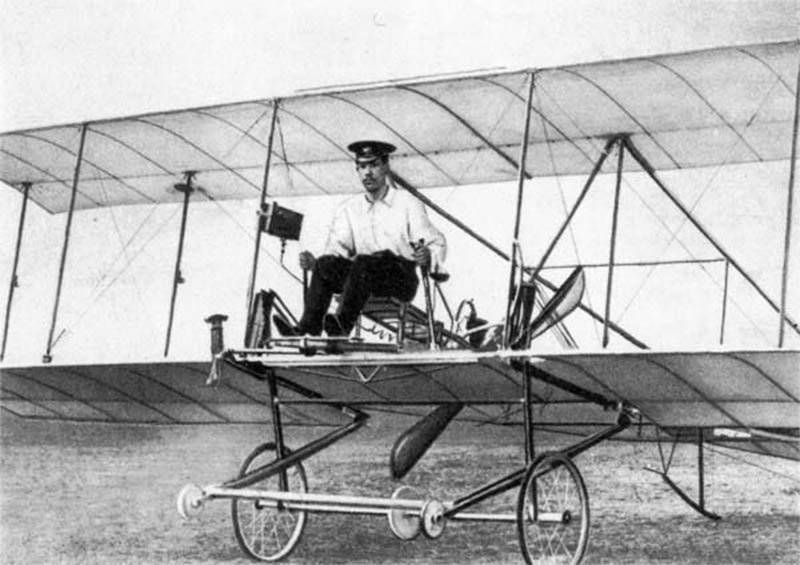
Gradually, in the aviation world, the practice of assigning the abbreviated names of their creators to aircraft was consolidated. So, in 1912 in the workshops of the Moscow society of aeronautics by the Italian pilot-athlete Francesco Mosca and the Russian aviators M. Lerche28 and G. Yankovsky29 a project double monoplane was built "NML" (based on the name of the device were the first capital letters of the names of its creators). Designed at the level of ideas of that time, the aircraft turned out to be easy, stable and well performed elementary pilotage. The monoplane was built so firmly that he could afford to withstand descents to the plowed field at full load. In May 1912 on "NML" one of its founders, aviator G.V. During the 2-th Moscow Aviation Week, Yankovsky set the All-Russian record, rising to the height of 1775 m. During the aviation week, a bimonoplan was also presented with the abbreviation "CHUR" designs N.V. Rebikova. The name of the aircraft was also based on the capital letters of the names of its creators: G.G. Chechet, M.K. Ushakov, N.V. Rebikov. During tests at the Khodynka field (Moscow), the pilot M. Lerkhhe who piloted it, with a strong wind, was able to rise into the air and fly the entire airfield in jumps in a straight line. In the future, flights N.V. Rebikova in St. Petersburg on the plane "CHUR" ended in an accident (July 1912), after which the device was no longer restored30.
During this period, airplanes in Russia began to receive their own names, unrelated to the names of their designers. One of the first to receive such honor was a twin-engine aircraft. «Grandee Baltic" (designs by II Sikorsky), built in the spring of 1913 at the Russian-Baltic Carriage Works (RBVZ). Because of its huge size at that time, he was given the name Grand (“Big”) with a prefix "Baltic" (at the place of aircraft assembly - RBVZ). But this name caused a mixed assessment among the general Russian public. Many considered it unacceptable for the name of the Russian airship. Therefore, a further improved modification of this type of aircraft became known as "Russian Knight". The size and weight of the new aircraft was about twice as large as all that was available at that time in world aviation technology. In the summer of 1913, it set a world record for the duration of time spent in the air. But fate was unfavorable to him. In September of the same year, at the Korpusnoy airfield during the 3 th competition of military airplanes from an airplane ("A piece of chalkler-xnumx")piloted by the famous Russian pilot AM Gaber-Vlynsky31, the motor came off and broke the giant plane, which was standing on the ground near the hangars, left box of wings. Due to serious damage to the airship, its designer (II Sikorsky) refused to overhaul the vehicle. One of the main reasons for its refusal was the construction of a more advanced type of giant aircraft that began in August of 1913. Soon a new modification "Russian knight" became an airplane "Ilya Muromets" (named after the Russian epic warrior), who was destined to win universal respect and worldwide fame.
With its adoption by the Russian army, the beginning of the creation of long-range (strategic) bomber aircraft was laid. The name of the aircraft was put in big letters (Old Russian) in the nose of the aircraft or on its fuselage. Next to it was a military identification mark (a triangular national flag), approved by the decision of the Military Council under the War Minister in the summer of 1913.
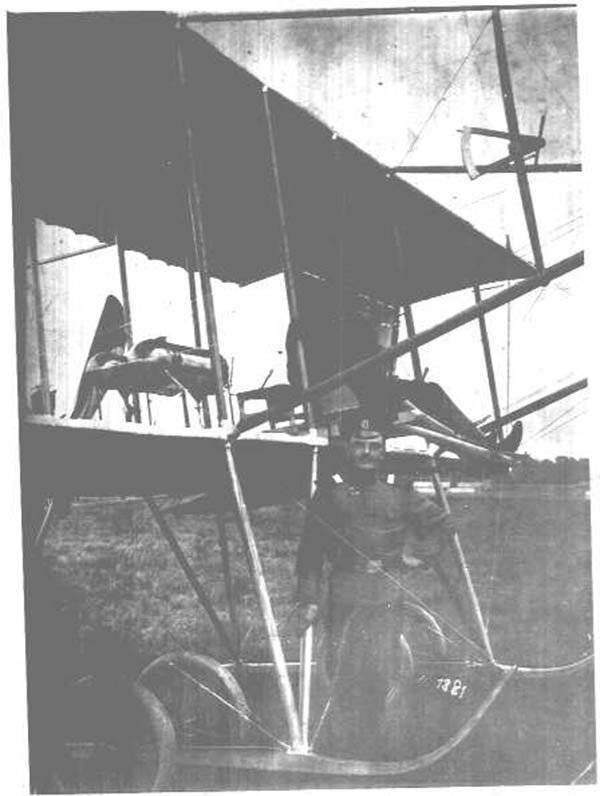
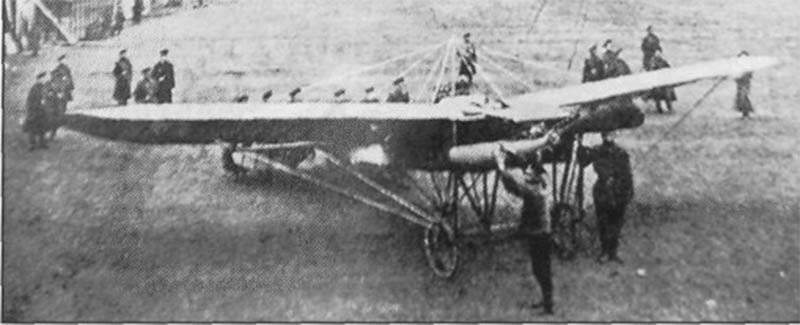
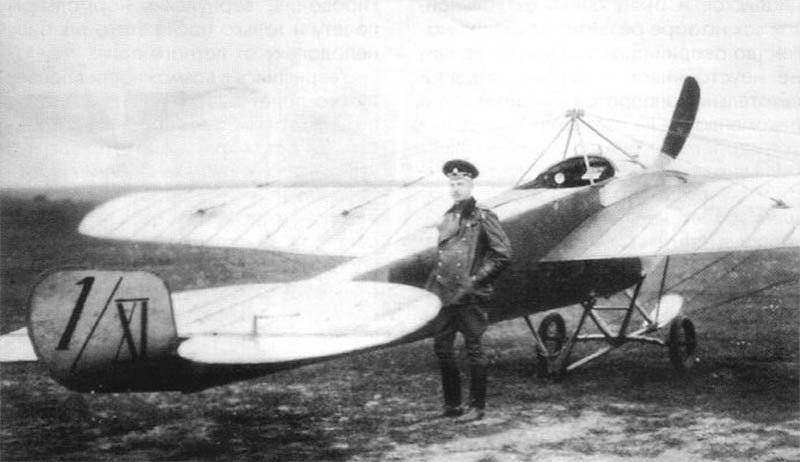
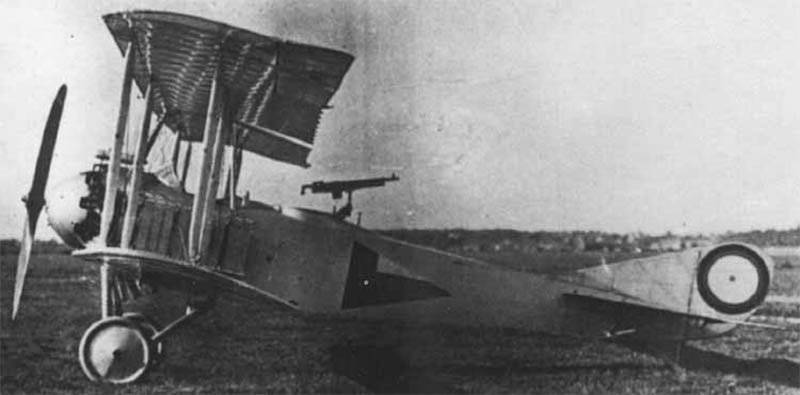
In parallel with the "Ilya Muromets" during the First World War another heavy domestic giant aircraft was built "Svyatogor" (designs by V. A. Slesarev), which, in the opinion of individual specialists, was ahead of his time by several years. The estimated flight weight of this aircraft was about 6500 kg, and 50% of it should have been the payload. With a speed of over 100 km / h, the device had to fly for a long time - up to 30 hours and rise to a height of 2500 m. But representatives of the state aviation industry refused to finance the project V.A. Slesareva, preferring to build a proven airborne ship "Ilya Muromets".
A certain counterweight to gigantic aircraft is the appearance of a “midget airplane” in 1912. ("Duhovetsky-1") Anzani engine in 8 HP, created by a group of students of the Moscow Technical School (MTU) headed by inventor A.V. Dukhovetsky Dimensions of it were significantly smaller than that of other aircraft, and the device was one of the first domestic avitokok. On it were made small flights. The next plane was "Duhovetsky-2", named "Small Muromets" for the unusual for small aircraft scheme with a closed cockpit in the fuselage with glazing in the sides and in the ceiling, but without a view ahead. Its construction was completed in the summer of 1914.32
The tradition of assigning the names of people who have played a significant role in the development of domestic aviation has also been developed. So, 23 March (5 April) 1911, at the next meeting of the Aeroclub of the Committee for the collection of donations for the creation of the military fleet, it was decided to purchase three aircraft for the available money and assign them the appropriate names. The first of them (the Farman system) was given the name "People's Name Maciev33» other aircraft (Bleriot systems) - "People's № 2» third (Pishof system) - "National №3"34.
Thus, the Farman-type aircraft perpetuated on its board the name of the outstanding Russian pilot L.M. Macievich, who tragically died on September 24 (October 7) 1910, when performing a demonstrative flight at one of the capital's airfields. By his death, he discovered a sad list of Russian aviators who had tragically passed away.
July 19 (August 1) 1912 from the Commandant airfield (St. Petersburg) took off the nominal Bleriot aircraft (piloted by AE Raevsky35), dedicated to the famous Russian pilot B.V. Matievich-Macievich36crashed in a spring 1911 crash in the city of Balaclava. The device was built with funds raised by the Imperial All-Russian Aeroclub (IVAK) with voluntary donations.37.
This tradition has been continued during the First World War. In memory of the deceased friend - the outstanding Russian military pilot, Captain P.N. Nesterov38 Lieutenant CM Brodovich39 placed on board his aircraft inscription "Memory of Nesterov." With this step, he immortalized the name of the person who committed the first in the world air ram of an enemy plane. Unfortunately, in subsequent years in the aviation PN Nesterov no more honored this honor.
On the eve of the war, another good tradition was born in our country - the assignment to aircraft of the names of public and private institutions and organizations that built their own funds. This tradition has become an integral part of the unfolding broad movement to create the Air Force with public money. So, in September 1912 of IWAC concluded an agreement with the leadership of the North-Western Railway on the construction of an airplane (Farman system) for the needs of the flying club flying school. "Northwest Roads". For its acquisition, the railroad workers handed over about 6 thousand rubles to the chairman of the IWAC, collected by the assistant to the chief of the traffic service engineer Berch for donations from the railway employees40.
Such an initiative encompassed not only Russia, but also many European states. So, on the pages of the periodical of the military department of the newspaper “Russian disabled” from 8 (21) in November 1912, in particular, it was noted: “Just as it was in France, the cities of Romania begin to offer airplanes as a gift to the military department. The first example was given by the city of Iasi, which brought an airplane named after him. ”
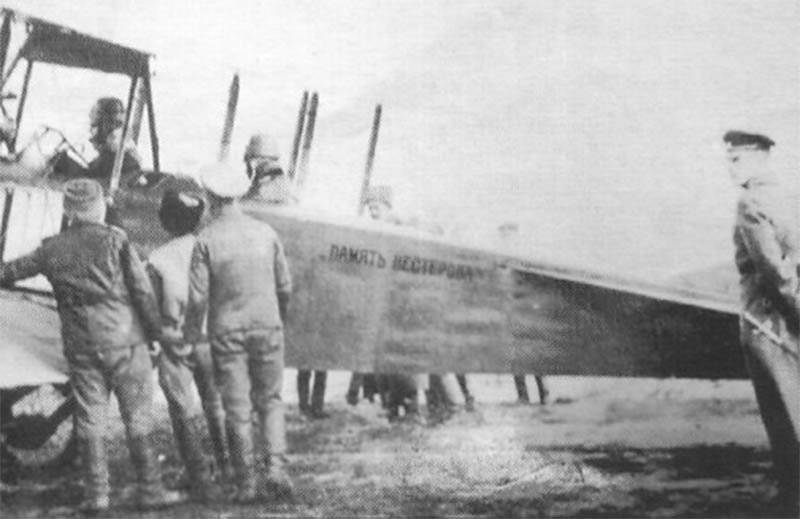
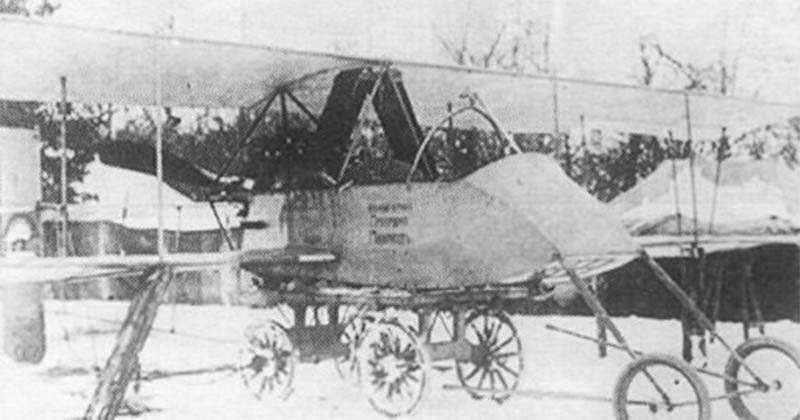
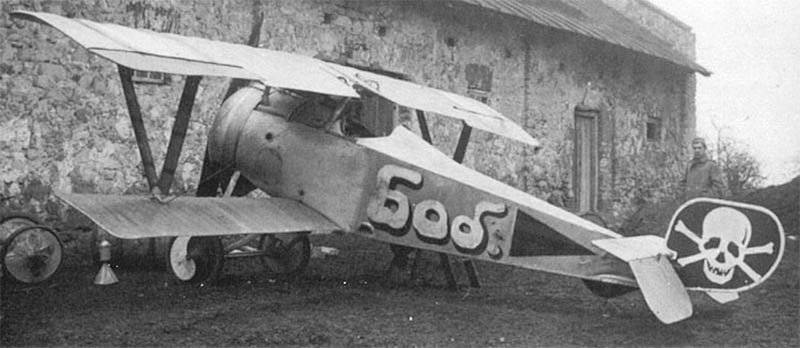
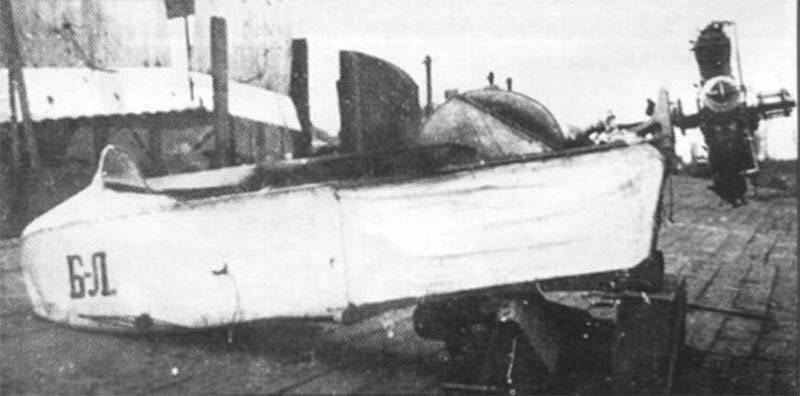
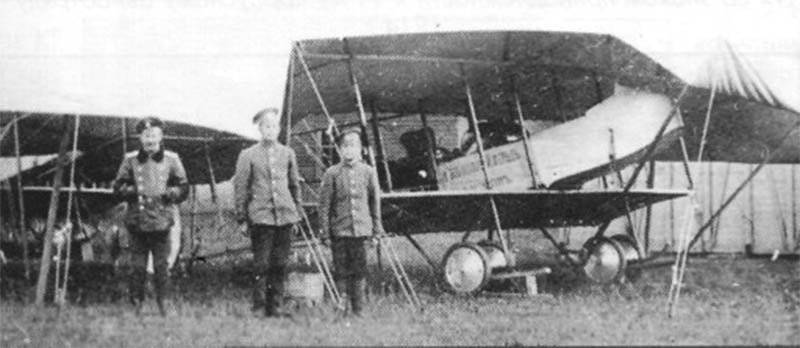
Nor did the Russian military aviation stand aside. With the beginning of the creation in the army and navy of the first aviation detachments, the need arose for their regular consolidation. In this regard, on the aircraft fuselage began to appear inscriptions with the numbering of an aviation unit. For example, the location of the aircraft of the 1 th air company could be determined by the available inscription: "1-th airration squad, Art. Petersburg. " Most often, it was reduced to a few letters. An example of this is the Brest-Litovsk fortress aviation detachment, which used only two capital letters. "B.-L." (tab. №1).
Throughout the war, all the squadrons of the Russian army received the appropriate abbreviation.
Separate military aviators placed their own names on the aircraft fuselage to increase attention to their personalities. Among them was the pilot of the 5 th fighter aviation detachment Ensign O.P. Pankratov (Northern Front). The recognized master of air combat as his business card for friends and enemies used the following inscription: "Military pilot warrant Pankratov." In September, in the area of Dvinsky positions, 1916 with the French service observer Henri Laurent engaged in an unequal battle with an enemy squadron, during which they managed to shoot down an enemy aircraft. In this air combat, the fighter pilot Pankratov was mortally wounded.
Sometimes Russian pilots decorated the boards of the aircraft with exotic items, such as: "Bob", "Kitty" etc. It seems that with a sense of humor, the knights of the airy ocean were all right.
Under the conditions of an acute shortage of domestic aviation technology, one of the pioneers of Russian aviation, V.A. Lebedev spoke to the leadership of the military department with a proposal to re-equip the captured enemy aircraft for the needs of the Russian army. The plant, organized by him in 1914 in the city of Petrograd, became actively involved in solving this problem. Soon, on the basis of German and Austrian aircraft captured at different times, a new type of reconnaissance aircraft was assembled. "Swan". Later on, the Russian army received various modifications. -Swan-XI, Swan-XII, Swan-XVI, Swan-XVII, Sea Swan-1 (LM-1) and more
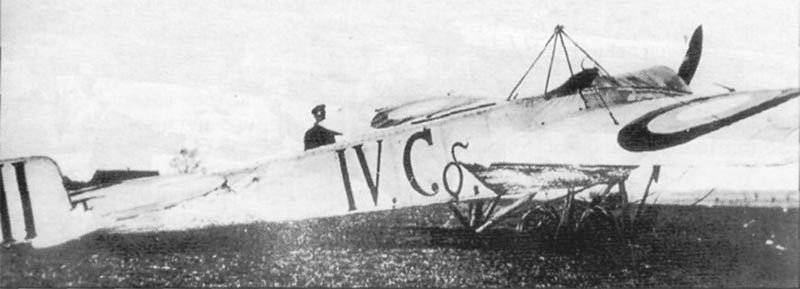
Encryption of aviation parts42 (1914 - 1916)
* Were introduced as the formation of the period 1915 - 1916.
** Order on the military department of 25 June (8 July) 1916 Mr. № 332.
The subsequent increase in the aircraft fleet and the emergence of new aviation divisions (institutions) required an update of the ciphers in aviation, which was enshrined in the order of the military department in the autumn of 1917 (Table No. 2).
Attempts were made to develop an aircraft of the same type of large size. They became a twin-engine biplane "Swan-XIV" ("Swan-Grandee") which, despite the insignificant bomb load (total 900 kg), developed a speed of up to 140 km / h and possessed excellent defensive armament, which allowed it to be practically invulnerable in aerial combat.
But even conducted successful flight tests of this type of aircraft did not arouse much interest among the military and maritime departments of Russia. As always, there was no money for its mass production in the country.
By the fall of 1917, Russia was on the verge of great social upheavals, which soon completely changed the face of the state and its armed forces. This could not bypass the side of aviation, which at the end of the First World War turned into a separate branch of the Ground Forces and significantly influenced the course of military operations.
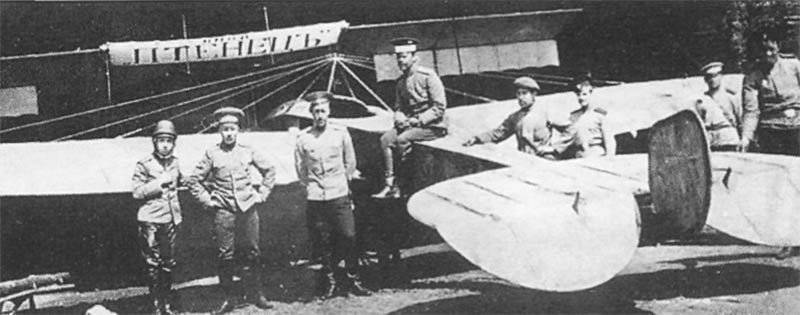
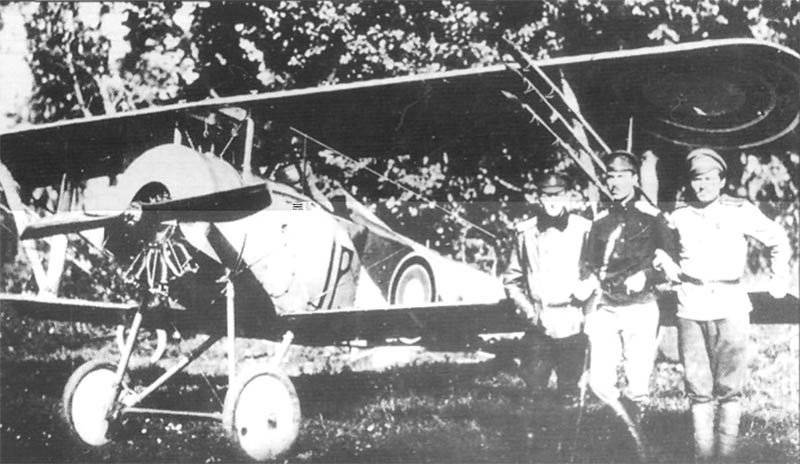
LINKS AND DETAILS:
1 In November, 1783 in St. Petersburg launched a small balloon, then a public demonstration of balloon lifting in Russia took place in March 1 784 in Moscow. A. Demin. Khodynka: the runway of Russian aviation. - M .: RUSAVIA, 2002. - C.5.
2 The balloon "Eagle" was made of Chinese silk, "Falcon" - from perkalya.
3 The commission was established in accordance with the decision of 22 December 1 884 of the Military Council (January 3 1885) under the Chief Engineering Directorate chaired by the head of the electroplating unit, Major General M. M. Boreskov.
4 On Volkom field in 1 885 was placed the first in Russia personnel team of aeronauts.
5 Boreskov Mikhail Matveyevich [1829 - 1898] - Russian military leader, Lieutenant General (1887). Assistant head of the technical electroplating institution. From 1884, the chairman of the Commission for the use of aeronautics, pigeon mail and guard towers for military purposes; in 1887, he was appointed Head of the Galvanic Unit, renamed 1891 in the Electrotechnical Part of the Main Engineering Department; Member of the Russian Technical Society; in 1887 - 1895 Chairman VII (Aeronautical) Division of this society.
6 Nikolai Fedorov [1835 - 1900] - Russian military leader, lieutenant-general (1888). Head of the laboratory of the Mikhailovsky Artillery Academy. From 1891, member of the conference of the Academy; in 1869, appointed member of the commission for the use of aeronautics for military purposes; and in subsequent years dealt with issues of aeronautics. In 1884 - 1886 He was elected Chairman of the VII Department of the Russian Technical Society. Since 1887, he constantly lived in Paris, performing various assignments of the Ministry of War.
7 Zverev Konstantin Yakovlevich [1821 - 1890] - Russian military leader, engineer-general (1887). From 1872, a member of the Engineering Committee and the head of the department of general affairs; in 1, 882 was appointed comrade (deputy) of the inspector general for the engineering part.
8 RGVIA. F.808, op.1, d.9, l.65.
9 Orlov Nikolay Aleksandrovich [1855 -?] - Russian military leader, lieutenant-general (1906). Since 1888, a member of the VII department of the Russian Technical Society. From 1889 the clerk of the Office of the Military Scientific Committee of the General Staff, a member of the commission on the use of aeronautics, pigeon mail and guard towers for military purposes, from 1892 the professor of the Nikolaev Academy of Engineering. In 1904 - 1905 at the disposal of the commander in chief of the Manchu armies; in 1906 - 1907 Chief of the 3 Infantry Division.
10 Vannovsky Petr Semenovich [24.11. (6.12). 1822 - 17 (30) .02.1904] is a Russian military and political figure, General of Infantry (1883). He graduated from the Moscow Cadet Corps (1840), served in the Finnish Life Guard regiment. In the Crimean War (1853-1 856) participated in the siege of Silistra fortress. In 1855-1856 battalion commander. From 1857, the Head of the Officers' Infantry School, from 1861, the Director of the Pavlovsk Cadet Corps (from 1863, the Military School). From 1868, the head of the 12 Army Corps. In the Russian-Turkish war (1877-1878), the chief of staff, then the commander of the Ruschuksky detachment (1878-1879). In 1880, I was enrolled in the General Staff without graduating from the Nikolaev Academy. In May-December 1881 was the War Department Manager, in 1882-1898. war minister From 1898, member of the Council of State. In 1901-1902 Minister of Education.
11 RGVIA. F.808, op.1, d.23, l.36.
12 Training personnel aeronautic park at the galvanic part of the Main Engineering Department.
13 Zabotkin Dmitry Stepanovich [1837- 1894] - Russian military leader, lieutenant-general (1893). In 1872 - 1887 Member of the Engineering Committee of the Main Engineering Department; in 1887 - 1890 the manager of the affairs of this committee; from 1890 and. D. Comrade Inspector-General for Engineering, and from 1891, etc. Chief Engineer; in 1893, approved in position.
14 Airships in the war. -M.Minsk: Harvest Ast, 2000. - C.373.
15 The airship "Training" (1908), designed by Captain A.I. Shabsky, is considered the first movable balloon of domestic construction.
16 Semi-rigid airship "Swan" in 1909 was acquired by Russia in France at the plant "Lebodi".
17 Semi-rigid airship "Krechet", previously known as "Commission", was built in Russia in July 1909.
18 27 in November 1911 in the city of Chita with the 4 of the Siberian aeronautic company formed the first aviation squad in the Russian army, which was later transformed into the 23 of the squadron squadron.
19 The Russian-Baltic Carriage Works (RBVZ) is the largest enterprise in Russia that built rail cars, cars and airplanes. The chief designer of the aviation department of the plant was a talented aircraft designer I.I. Sikorsky. Aircraft production was headed by V.F. Savelyev, then - N.N. Polikarpov (the future major Soviet aircraft designer). Famous Russian aviators served as test pilots: G.V. Alekhnovich and G.V. Yankovsky. Within the walls of the factories were assembled: giant Baltic, Russian Knight (1913) and Ilya Muromets (1913-1914) aircraft, C-16 RBVZ, C-20 fighter aircraft, etc.
20 SS Aircraft Plant Schetinin was founded in St. Petersburg in 1909. Initially, it was named as the “First All-Russian Aeronautical Association” (founders: athlete, lawyer S.S. Schetinin, merchant MA Shcherbakov and designer Erdelyi). The chief designer of the plant is the famous Russian designer of flying boats, D.P. Grigorovich. The main specialization of the plant is naval aviation.
21 St. Petersburg Aviation Association (PTA) “Lomach and Coо»Created at the turn of 1909 / 10. PTA Founders: V.A. Brothers and A.A. Lebedev, aircraft designer SA Ulyanin and St. Petersburg businessman Lomach.
22 Aircraft Works of Joint-Stock Company “V.A. Lebedeva "was created at the beginning of the 1910's. near St. Petersburg (New Village). Founders AO: athlete, lawyer V.A. Lebedev and his brother - Professor A.A. Lebedev. Both foreign-made airplanes (Farmans, Newpores, Moranes, Voisins, etc.) and domestic ones were built at the plant: ChUR, PTA, etc. With 1915, the plant began to specialize in reworking captured aircraft into domestic ones: Swan-11, Swan-12, and the manufacture of propellers for aircraft. The chief designer of the plant was the engineer Shkulnik, his deputy was aircraft designer N.V. Rebikov.
23 Established in 1893, the bicycle factory "Dux" to the beginning of the 1910-ies. proceeded to the construction of aircraft. In June, the 1909 was built at the plant an airplane of the Wright brothers type with some changes in control. A. Demin. Khodynka: the runway of Russian aviation. - M .: RUSAVIA, 2002.- С.39.
54 Yu.A. Meller (Brezhnev) - Director of the Joint Stock Company "Dux". Officially, the Joint-Stock Company was called JSC Dux Yu.A. Moeller ", but this name did not take root. Already at the beginning of the 1910's. On the rear rudders of the Dux aircraft, they wrote “Dux AO, Yu.A. Meller ", then there is only JSC" Dux ". A. Demin. Khodynka: the runway of Russian aviation. M.: RUSAVIA, 2002. - C.58.
25 Henri (Henry) Farman [1874 -1958] - French pilot and aircraft designer. In 1908, he created his own aviation company, in 1909 he organized a flight school, where the first Russian aviators also studied. In 1912, Mr. Henri Farman united under the general name “Farman” two aircraft building companies - his own and his brother Maurice [1877-1964].
26 Sikorsky Igor Ivanovich [1889 - 1972] - a famous Russian-American aircraft designer. During the period of his activity in Russia he created the world's first giant aircraft: "Grand Baltic", "Russian Knight", "Ilya Muromets", attack aircraft S-19. In October 1914, on the basis of the English Tabloid reconnaissance aircraft, he developed the first Russian C-16 RBVZ fighter aircraft. In 1912-1917. worked at the Russian-Baltic Carriage Works as a manager and chief designer of the Aeronautical Department. Since 1918 in exile (at the beginning to France, then to the USA). The founder of the helicopter industry and large aircraft in the United States. In total, he designed 42 types of aircraft and 20 types of helicopters.
27 The Anatra plant in Odessa, on the eve and during the First World War, was the largest aircraft-building enterprise in the south of Russia. The design bureau of the plant was headed by G.M. Makeev. The plant assembled most foreign-made aircraft, and also designed its own domestic aircraft: the VI, the Anatra, the Anade, the Anasol, etc.
28 Lerche Max Germanovich [1889 -?] - one of the first Russian pilots, aircraft designer, brother of a member of the State Duma. He graduated from the school pilots society "Aviata" (1911). In 1912, he took part in the design of the Russian NML aircraft. During the 1 World War I as part of the 1 6 corps squadron (until August 1915 made 54 combat sorties). In March, 1916 was headed by one of the first fighter squadrons in the Russian army (12, Northern Front). During the Civil War he served as part of the Slavic-British Air Corps, a lieutenant of the British Air Force. After the war in exile.
29 Yankovsky Georgy Viktorovich [1888 -?] - one of the first Russian pilots, aircraft designer. He graduated from the pilot school of the society "Aviat", "Bleriot" (1911). В1 1912 took part in the design of the domestic aircraft "LYAM". During the 1st World War, as part of the 16th Corps Squadron, he was recognized as one of the best reconnaissance pilots. Until June 1915 he flew 66 sorties. For courage and bravery he was awarded 5 orders. From 1915 he served in the Ilya Muromets Air Squadron. During the Civil War, he served in the aviation of Admiral Kolchak. After the war in exile, then as part of the Croatian Air Force. Took part in World War II on the side of Nazi Germany against the USSR. Didn't return from combat flight.
30 A. Demin. Khodynka: the runway of Russian aviation. - M.: RUSAVIA, 2002. - C.96.
31 Gaber-Vlynsky Adam Mjacheslavovich [1883 - 21.6.1921] - one of the first Russian aviators, master of aerobatics. He studied flight art in the schools of Bleriot and Farman in France. In 1910, he began practical flights in Russia. In the winter of 1912-1913. set six national records, and on the basis of the 3 Aviation Week (1913) was recognized as the best pilot-athlete of Russia. He was a member of the first Russian “five petlists” (who performed aerobatics). Test Pilot JSC "Dux". Member of the Moscow Aviation Committee and Assistant Commander of the Moscow Military District on Aviation (1918). Later he emigrated to Poland. Test pilot and instructor of the Higher School of Pilots in the city of Lublin. He died in a plane crash (1921).
32 A. Demin. Khodynka: the runway of the Russian aviation. - M.: RUSAVIA, 2002 .-- p. 97.
33 Matsievich Lev Makarovich [1877 - 24.9 (7.10). 1910] - one of the first Russian pilots, captain of the Corps of Naval Engineers. He graduated from the Nikolaev Naval Academy (1906), the course of the Scuba Diving Training Detachment (1907), the Pilot School in France (1910). Since December) 1907 as part of the diving officers and overseeing the construction of domestic submarines at the Baltic Shipyard. Since May 1908 he was assistant to the head of the design bureau of the Marine Technical Committee. Developer of submarine projects (14), mine barriers projects (2), hydroplane project. One of the first in the world to propose projects for an aircraft carrier and a catapult for aircraft takeoff. Since 1910 he has been a member of the Air Fleet Division. Among the first group of Russian officers he received an aviator diploma. One of the developers of the theory of the use of naval aviation in war. Died tragically in the first plane crash in Russia (1910).
34 Russian disabled, 29 March (11 April) 1911. No.69. - C.2.
35 Raevsky Alexander Evgenievich [1887 - 7.10.1937/1911/1914] - Russian military pilot, one of the leading domestic masters of aerobatics. He graduated from the pilot school (1914) and aerobatics courses (1915) in France. Aerobatics instructor in aviation schools, later instructor of the Sevastopol military aviation school (1916-1917; 1915-1916). From June 32 to early 1917 as part of the 10nd air squadron of the active army. From July 1917 he was a pilot, later - the commander of the 1920th fighter aviation detachment. In December XNUMX, he was the head of the air station of the Main airfield of Uvoflot. During the Civil War, he taught at various aviation schools of the Red Air Force. Since May XNUMX, he was a member of the flight department of Glavozdukhoflot. Author of a number of scientific papers on stories aviation. In 1924 -1 930 in the publishing house of the magazine "Airplane". Unreasonably repressed (1937). Rehabilitated in 1968
36 Matyevich-Matsievich Bronislav Kalins Vitoldovich [2 (12) .10.1882 -21.4. (4.05.). 1911] - Russian military pilot, staff captain. Graduated from a pilot school in France (1910). Instructor of the Sevastopol Aviation School. Died tragically in a plane crash (1912).
37 Russian disabled, 21 July (3 August), 1912, No. 160. - C.1.
38 Nesterov Petr Nikolaevich [15 (27) .02.1887 - 26.08. (8.09.) 1914] - Russian military pilot, captain (1914, posthumously). He graduated from the Mikhailovsky Artillery School (1906), the Officer Aeronautical School (OVSH) (1912). In 1912-1913. attached to the aviation department of the OVSh. In 1913, he was a member of the squadron of the 7th aeronautical company. Deputy Chief, then Chief of the 11th Corps Squadron of the 3rd Aviation Company. 9.09.1913/8.09.1914/XNUMX, for the first time in the world, made a closed loop "loop" on an airplane. Member of a number of long air flights and one of the developers of "Russian air combat". On September XNUMX, XNUMX, for the first time in the world, he rammed an enemy plane by air, during which he died.
39 Brodovich Sergey [9 (21). 10.1885 - before 1923] - famous Russian aviator, captain (1917). He graduated from the Tiflis Cadet Corps, Nikolayevsky Engineering School (1-grade), the officer class of the Aeronautical Training Park (1910), the course of the training division of Newpore School of Air Combat and Air Shooting in France (1915). He served in the 3 aeronautical company. In 1911, he received the title of "military pilot". Further instructor, art. Instructor of the aviation department of the Aeronautical School of Aeronautics; mentor of the famous Russian pilot, PN. Nesterov. In 1914, the commander of the airship "Ilya Muromets №3". In the autumn of 1915 - in the spring of 1917 in a foreign business trip to France. From April 1917, the commander of the 2 corps air squadron. Further in emigration (Yugoslavia).
40 Russian disabled. 8 (21) September, 1912, No. 198. - C.2.
41 Ibid. 8 (21) November 1912, No. 245. - C.4.
42 A. Kimbovsky. Badges of the Russian military aviation 1913 -1917. Zeikhgauz (5). - P.34.
43 Ibid.
Russian Aviation during the Great War
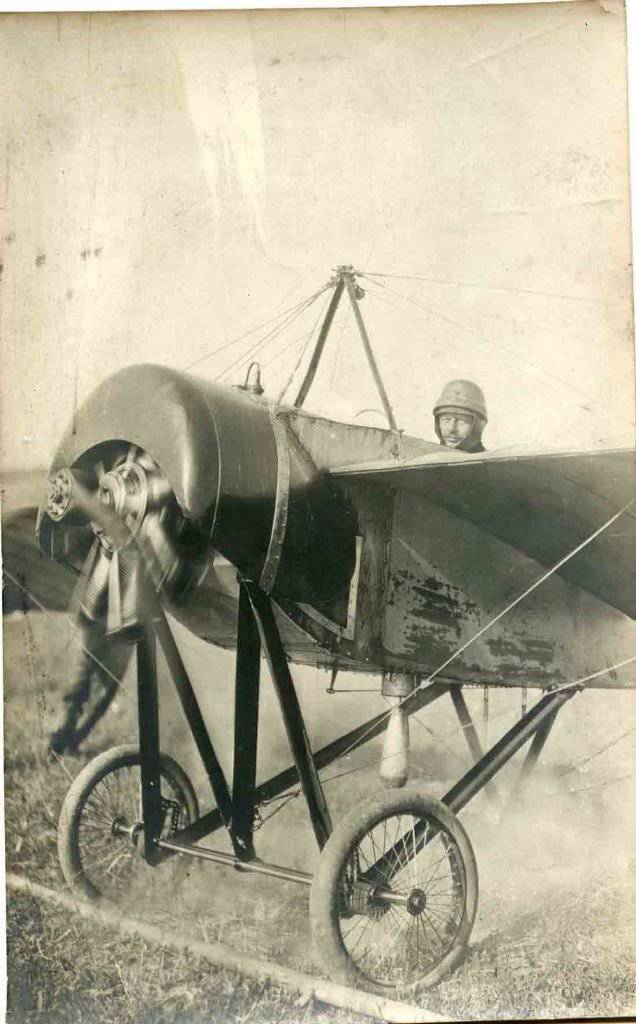
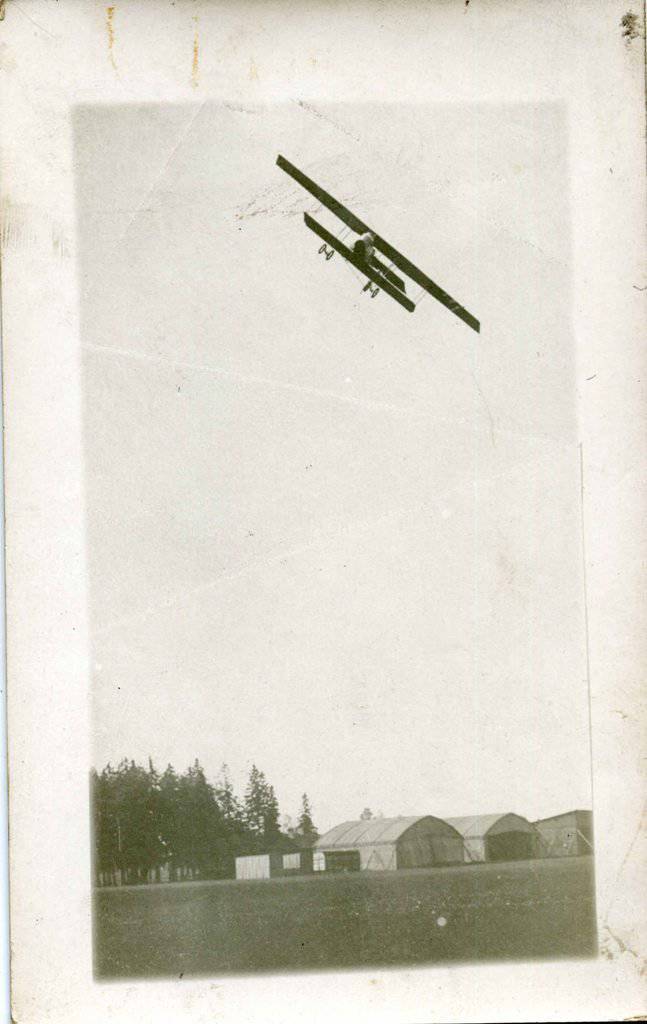
- A. Lashkov
- From the history of own names of aircraft of Russia, 1885-1917 years
From the history of own names of aircraft of Russia, 1918 - the end of 1920
From the history of own names of aircraft of Russia, 1930-s
From the history of the own names of the aircraft of Russia during the war
From the history of Russia's own names of aircraft in the postwar period
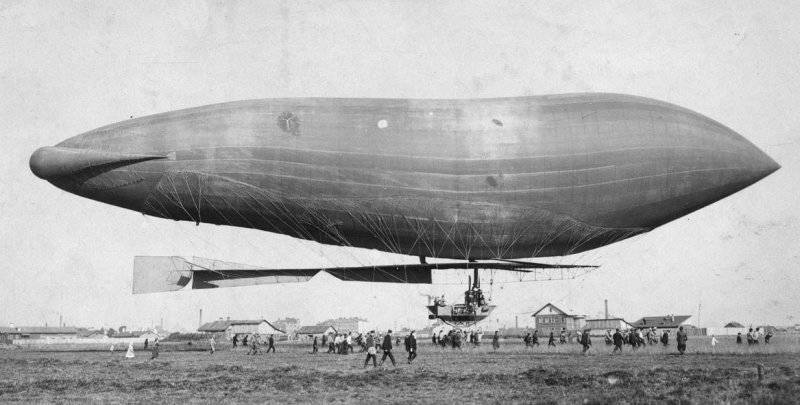
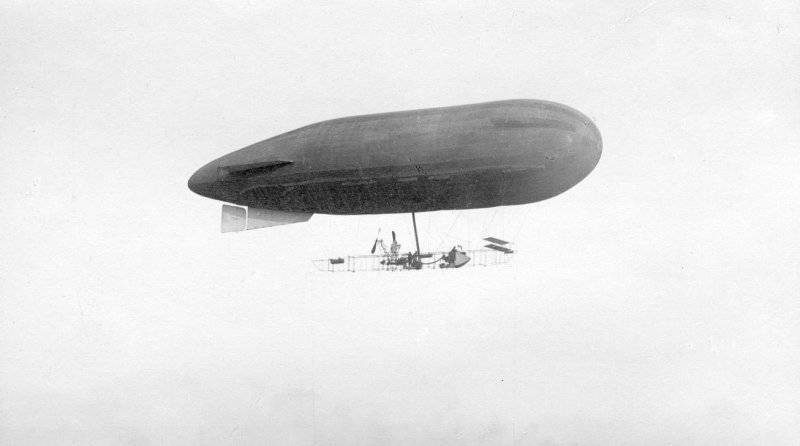
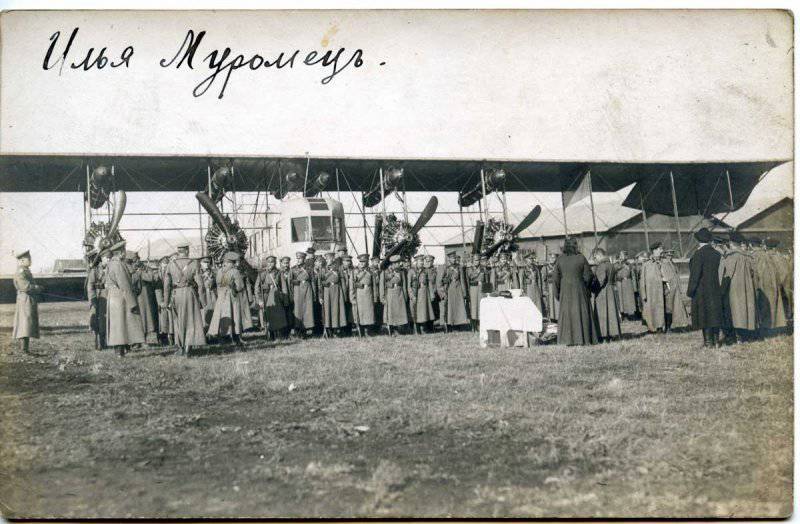
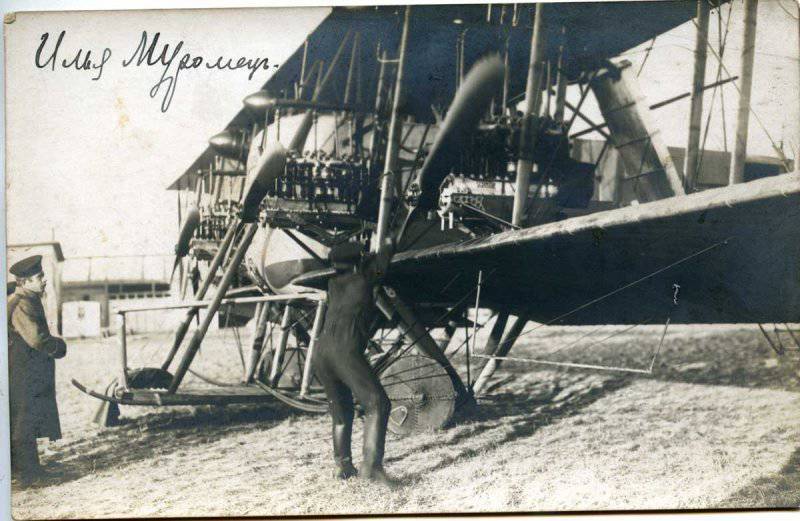
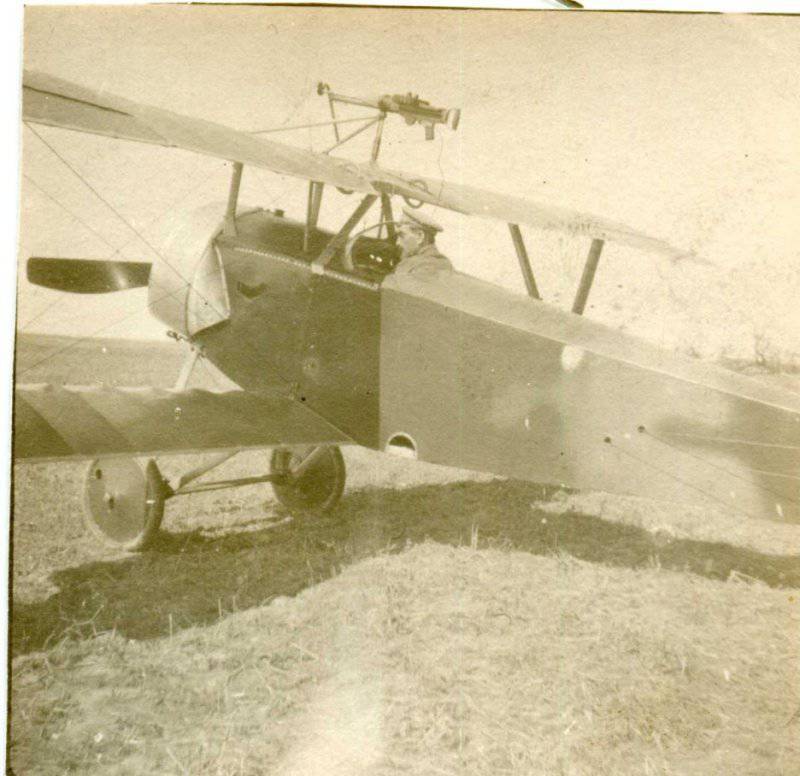
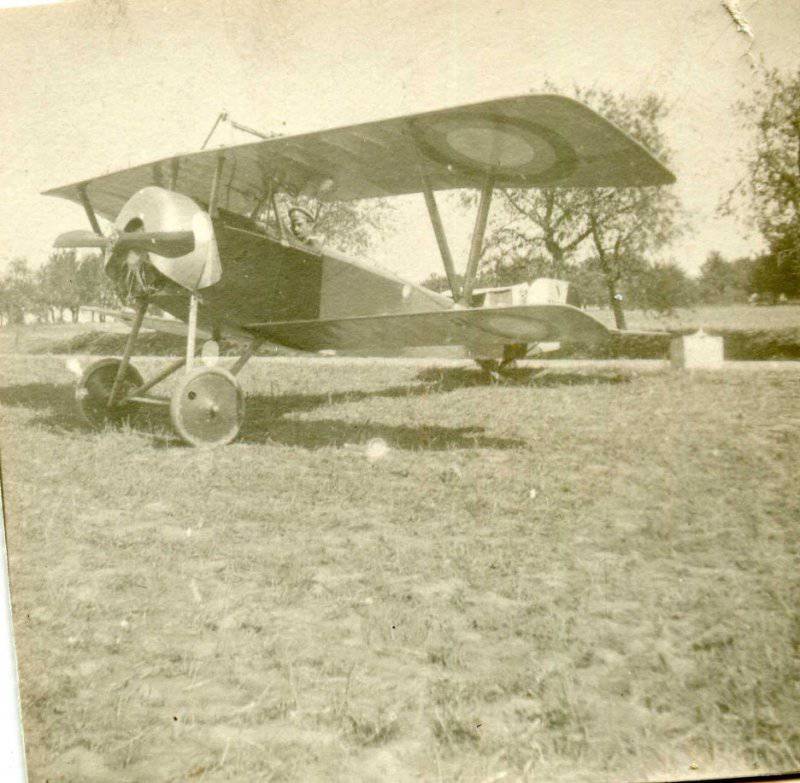
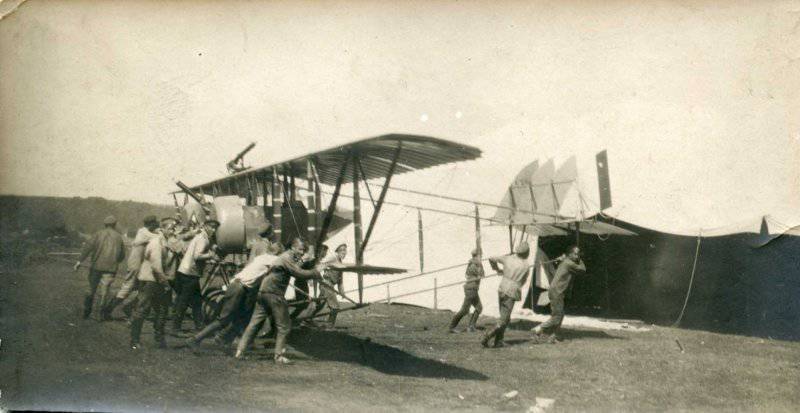
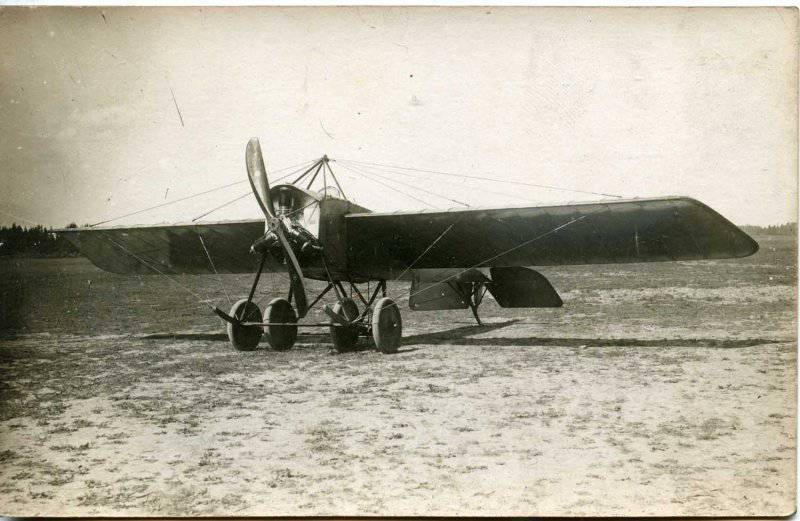

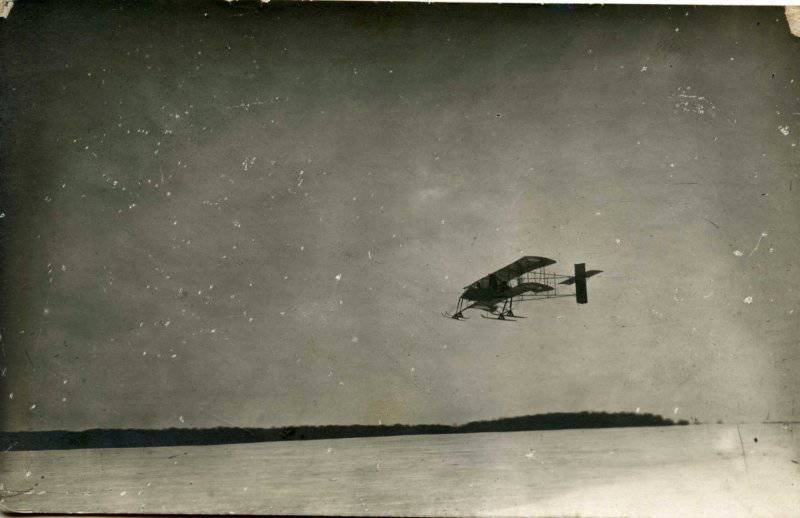
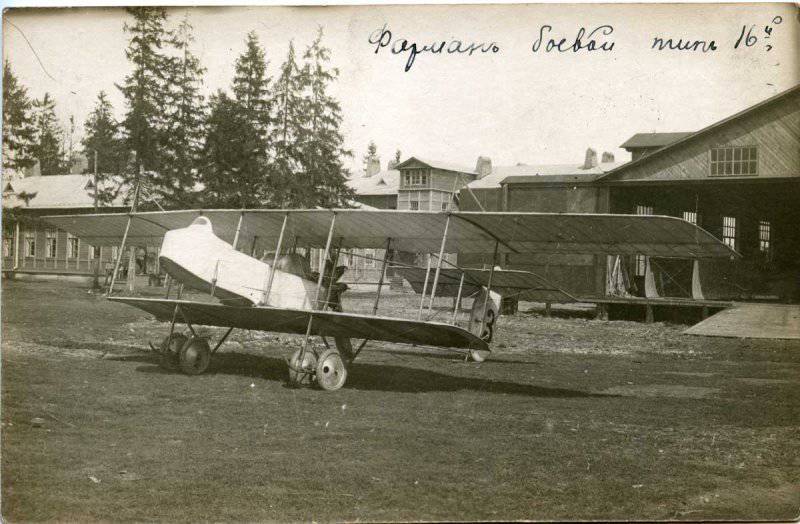
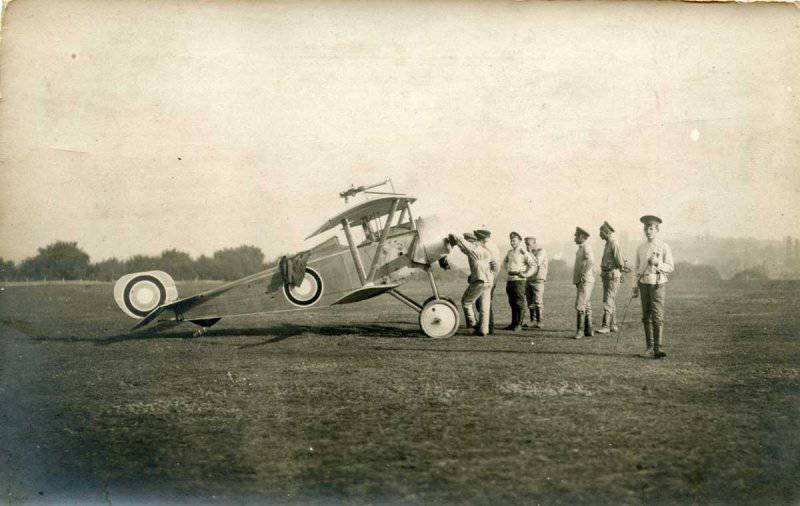
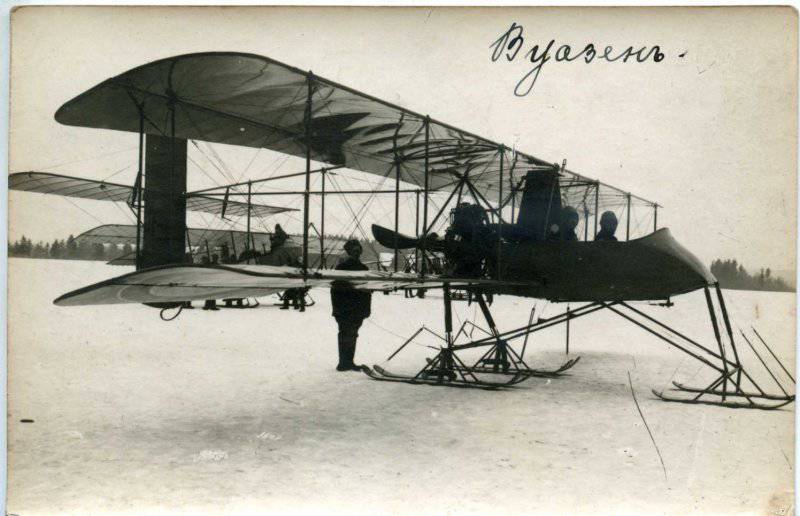
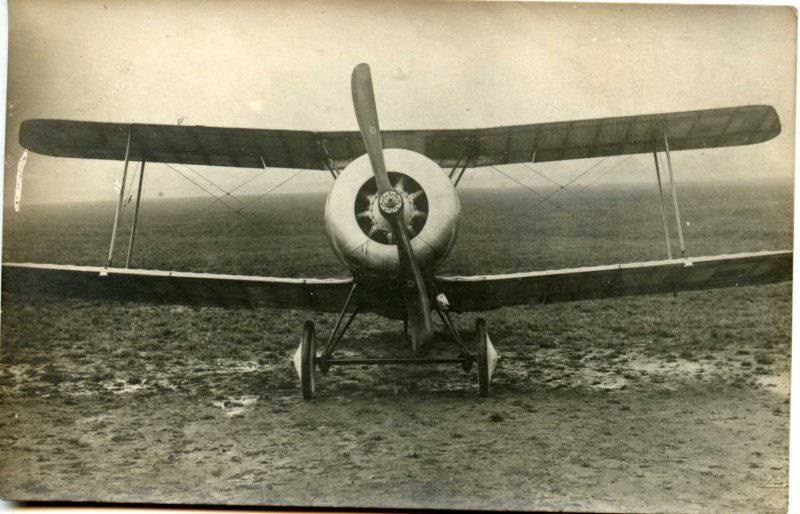
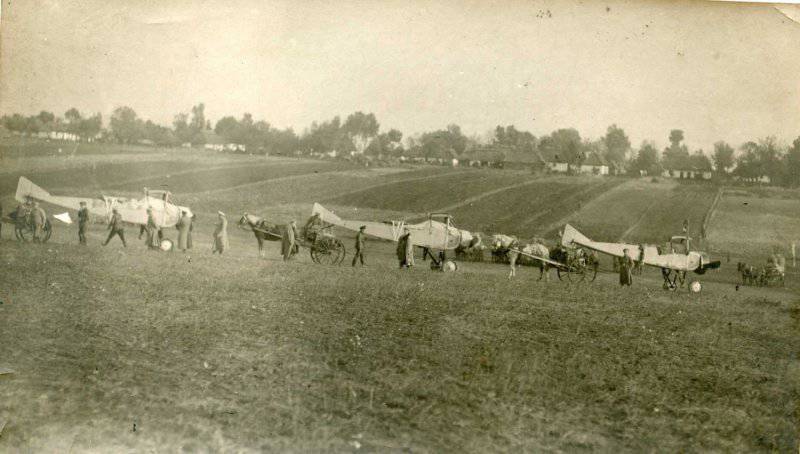
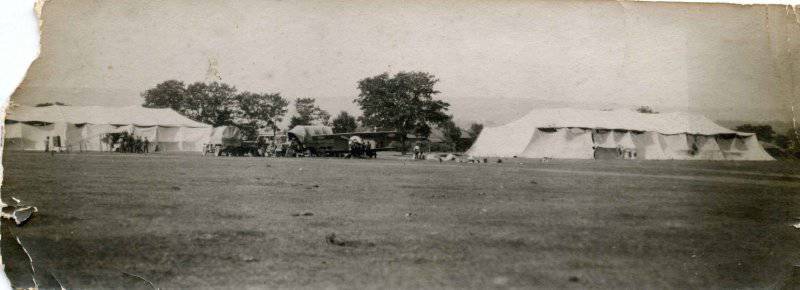

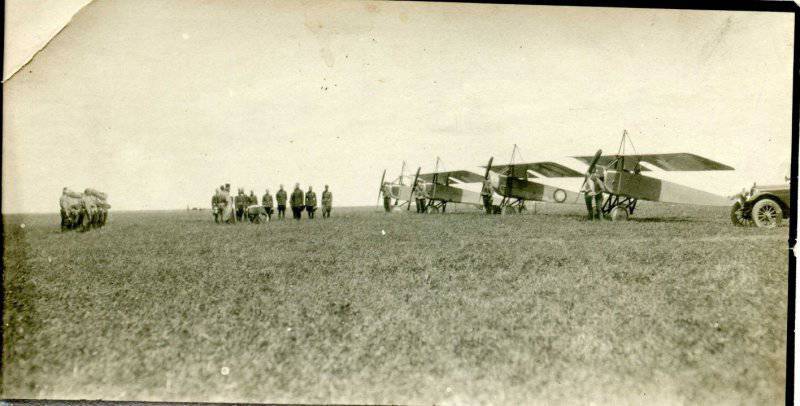
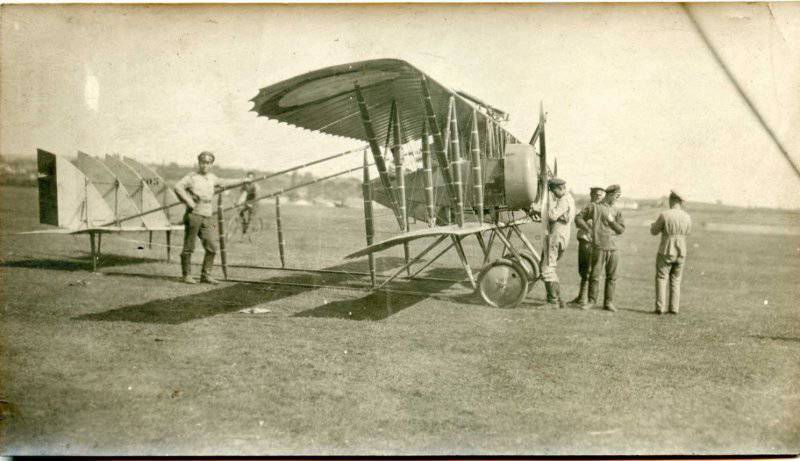
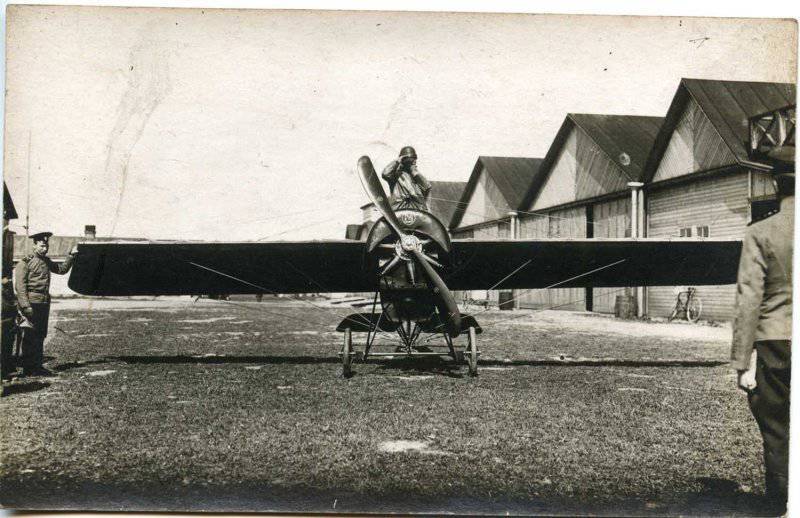
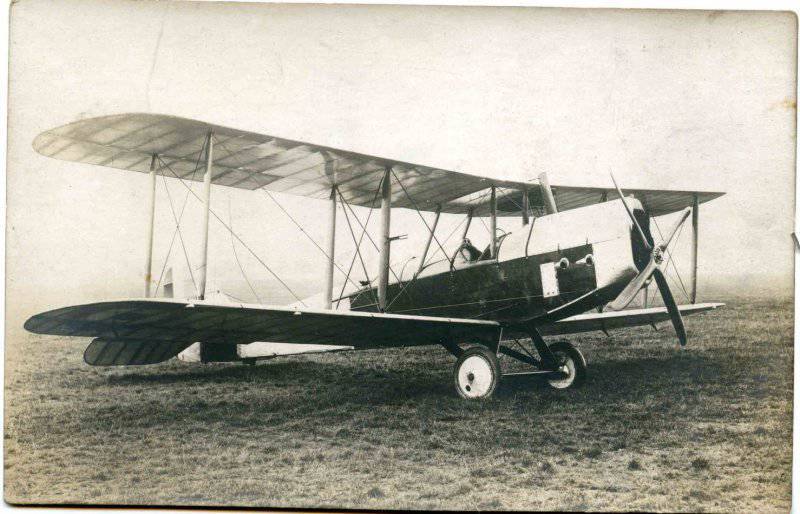
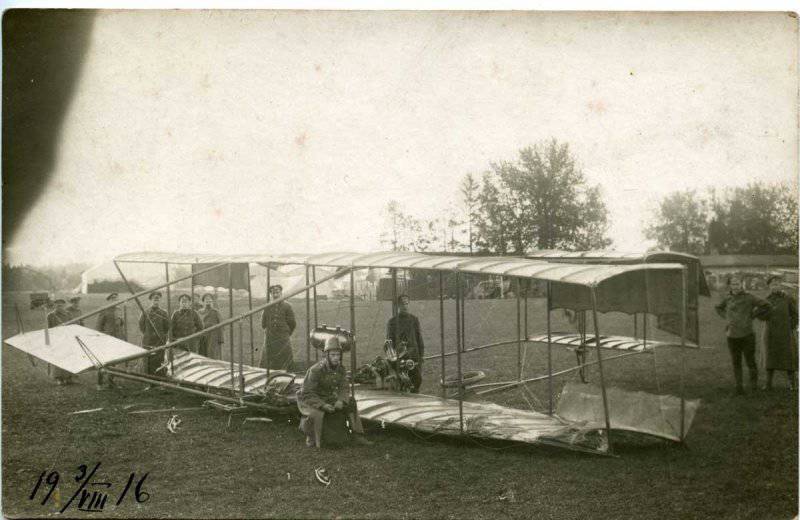
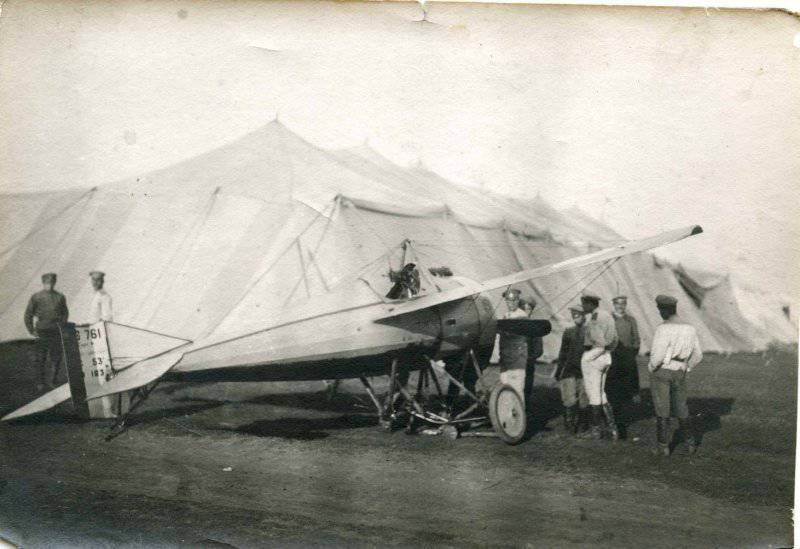
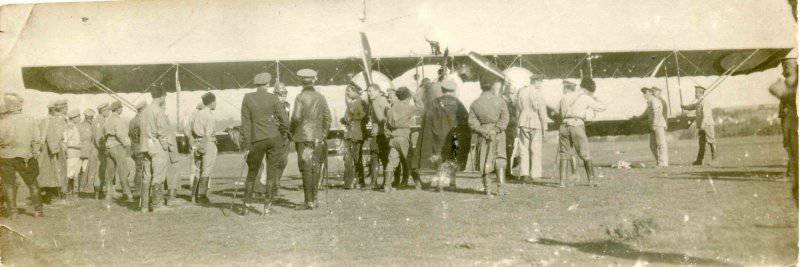
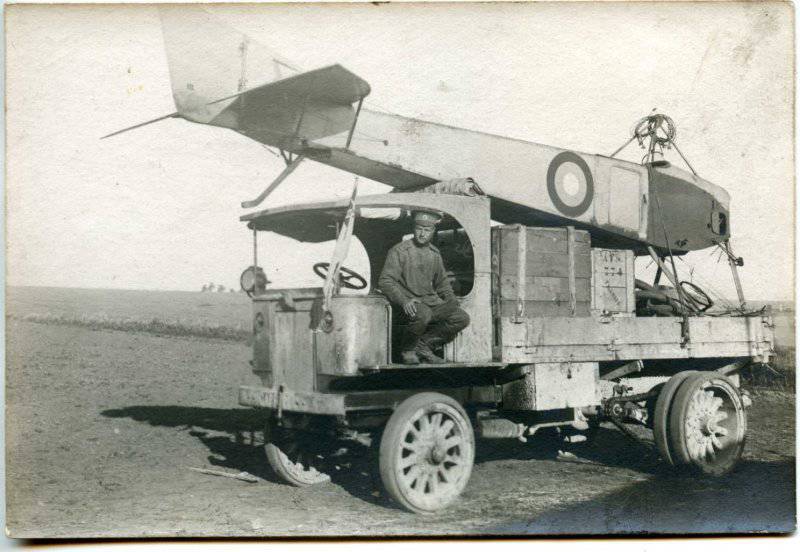
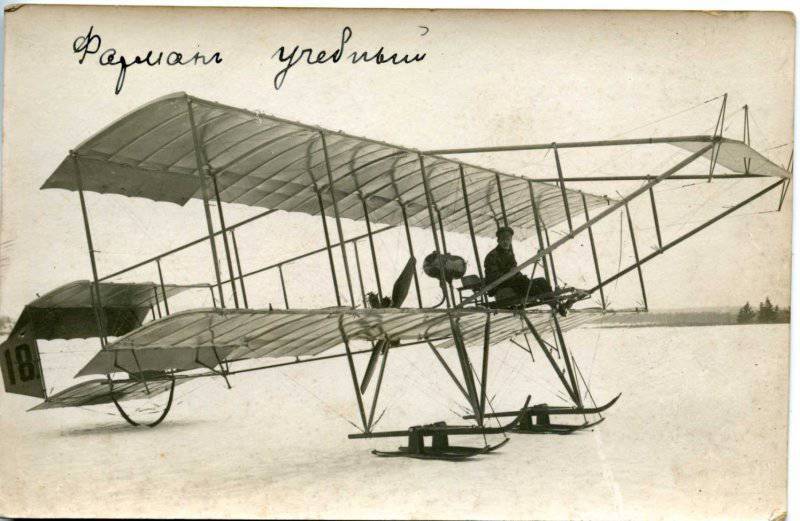
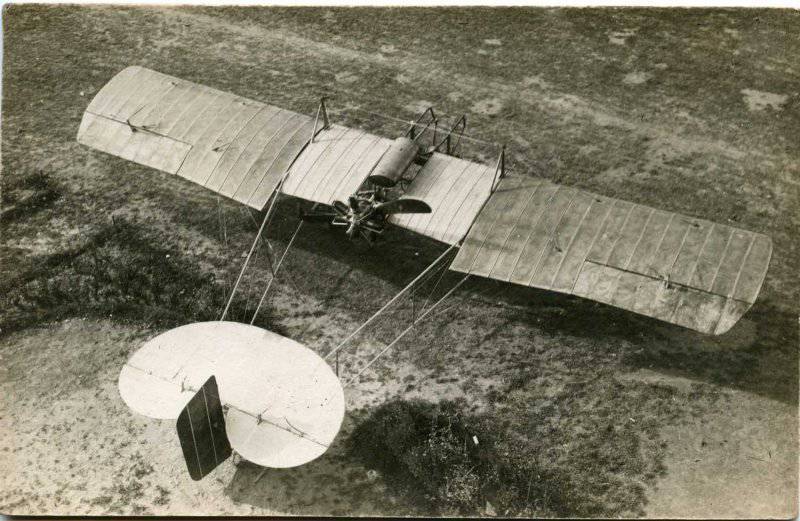
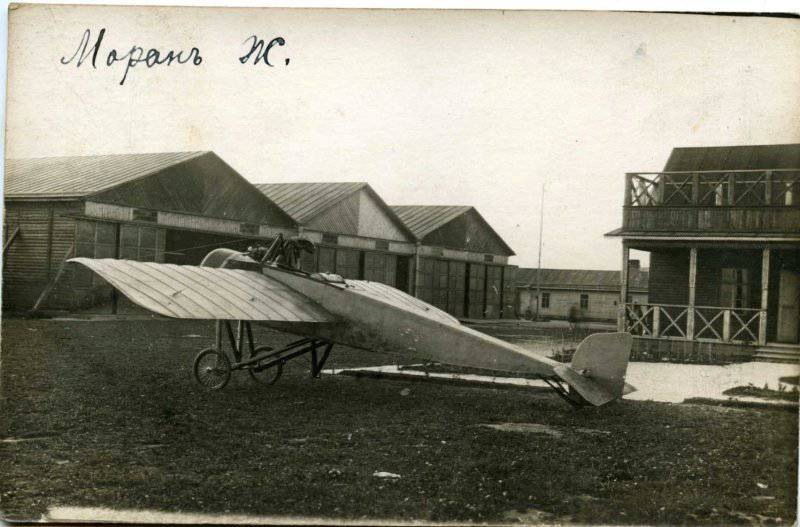

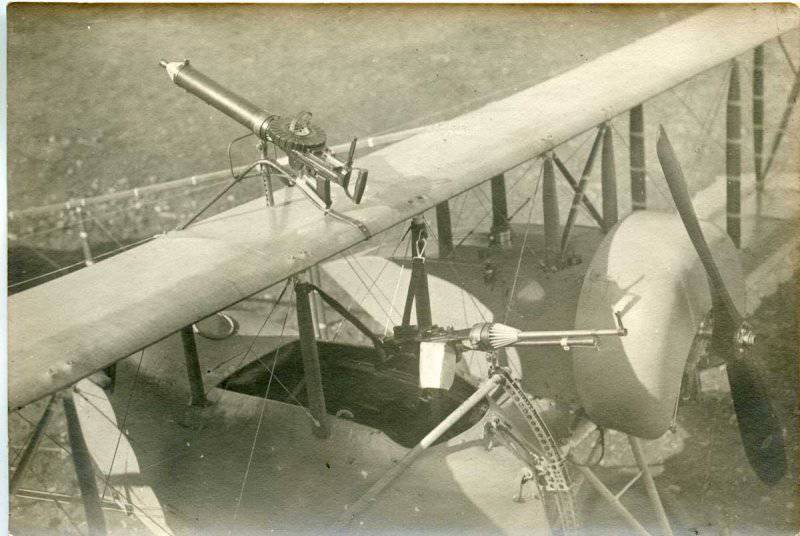
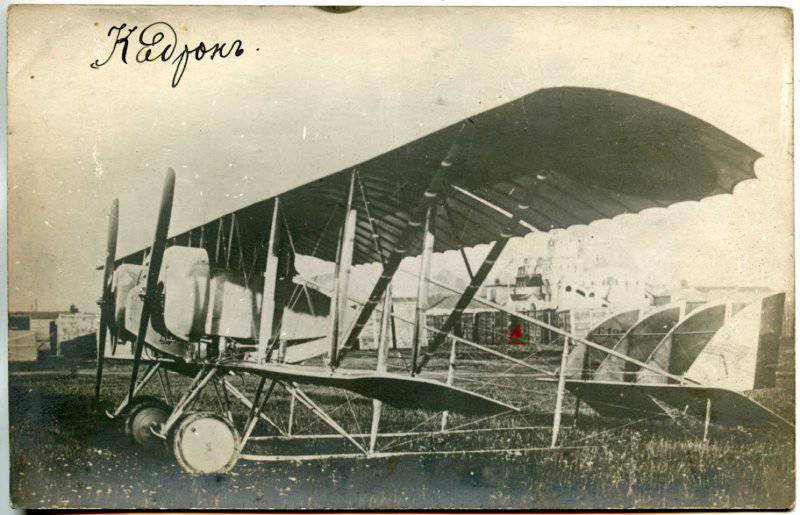
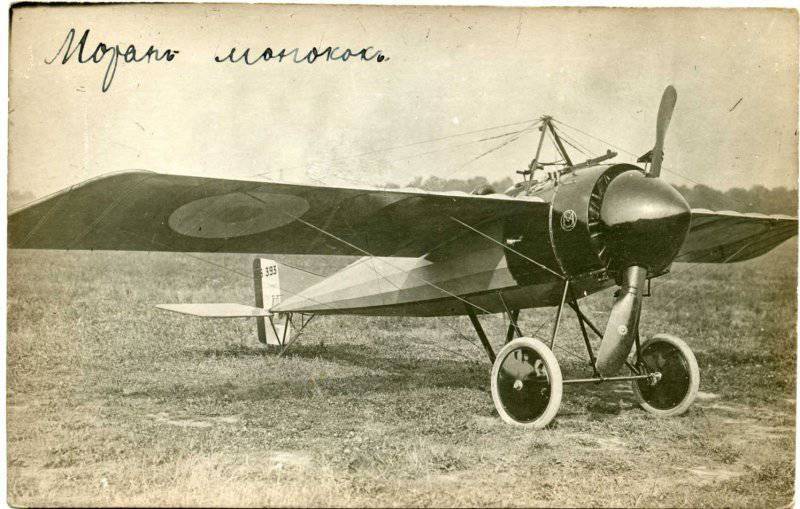
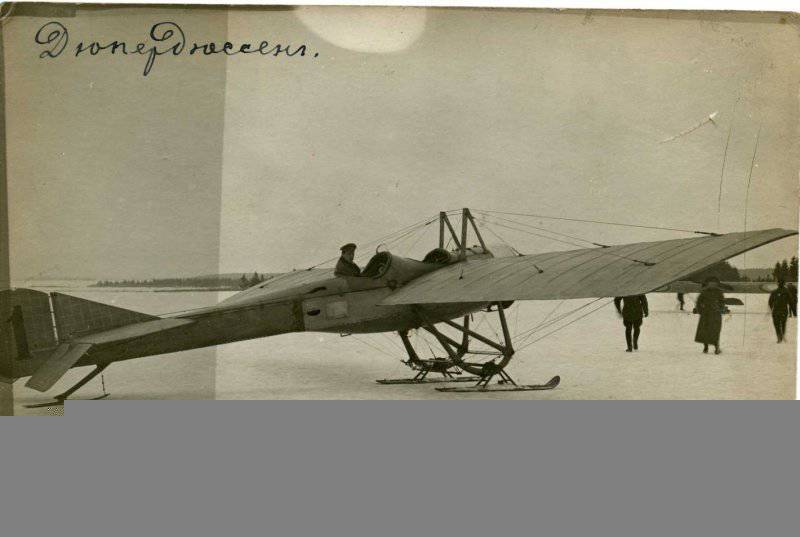
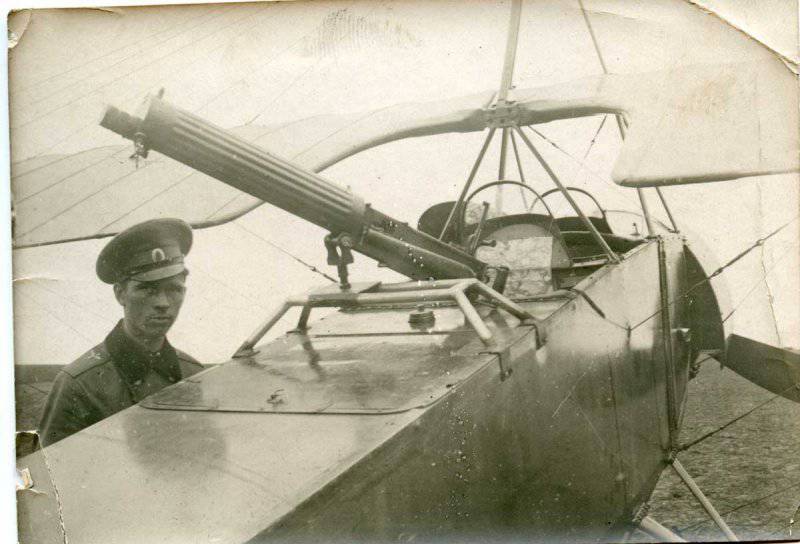
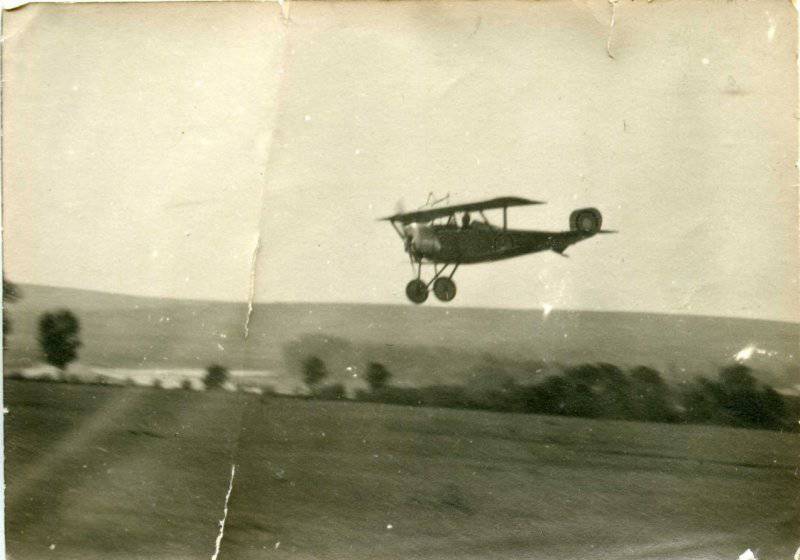
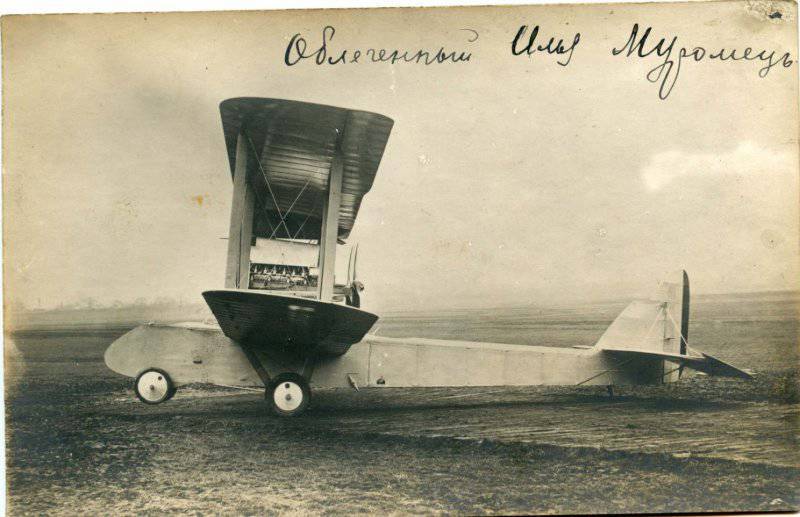
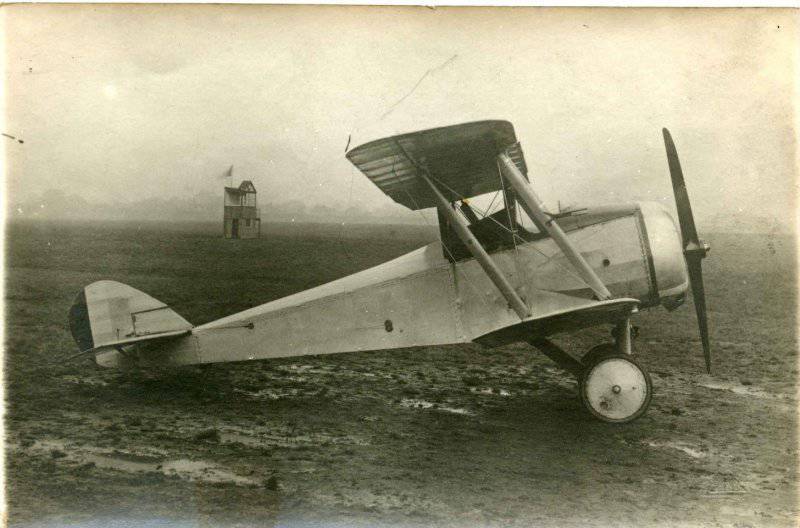
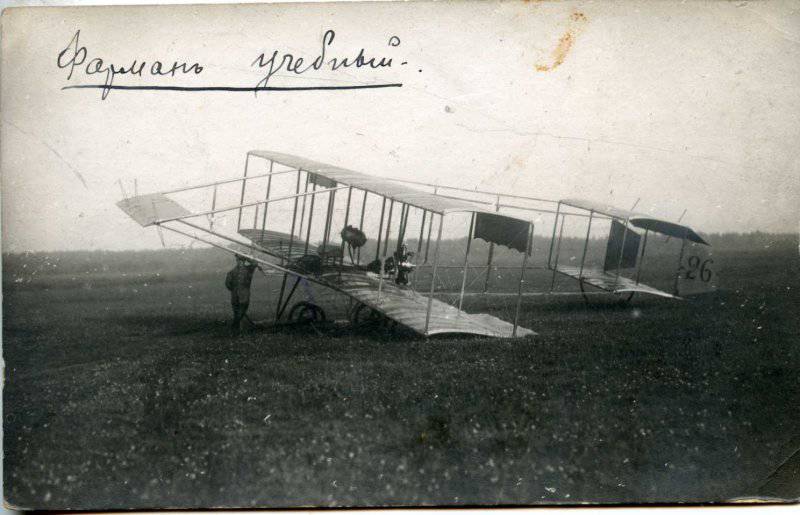
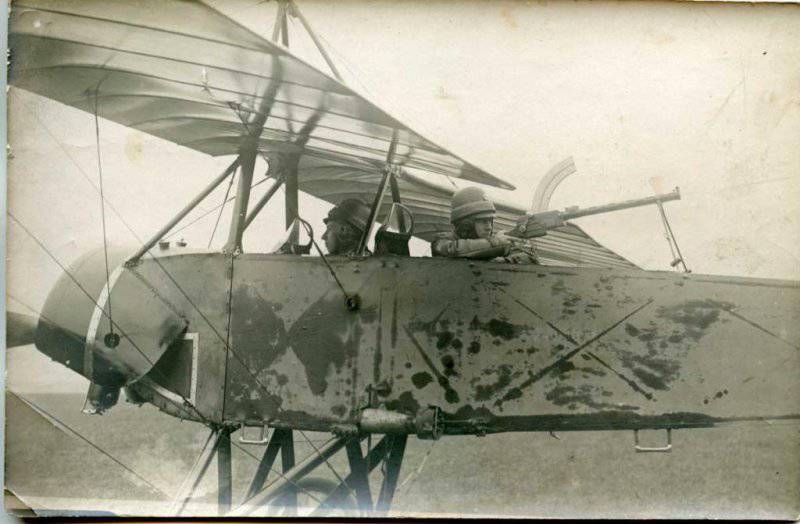
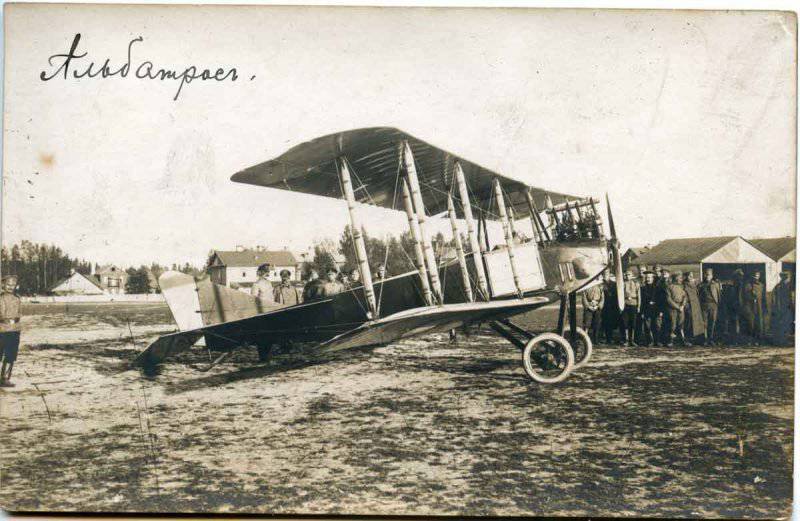
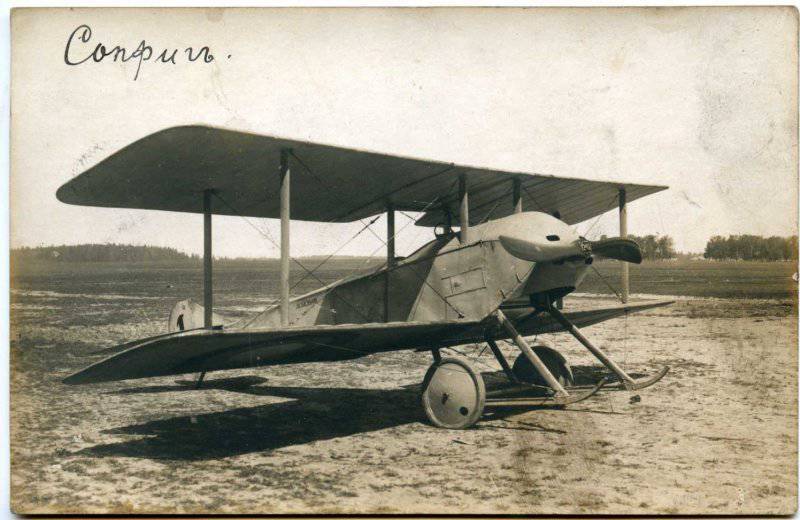
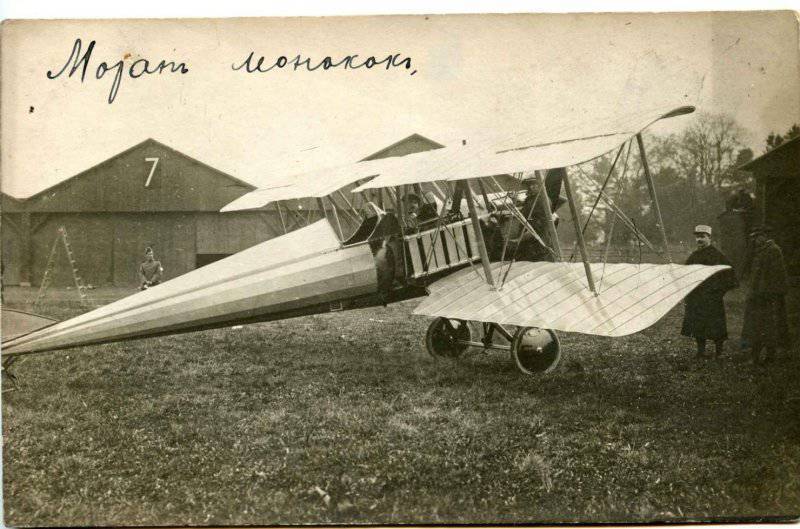
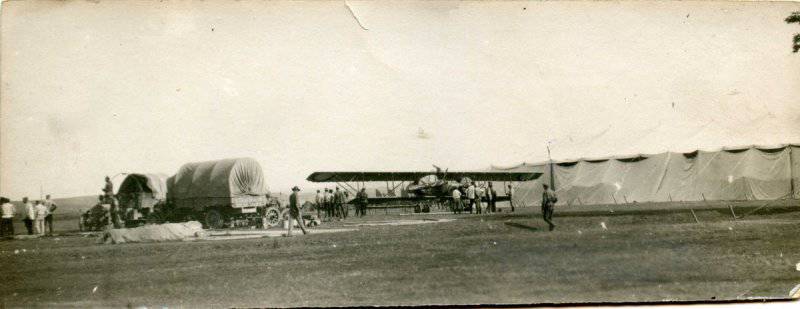
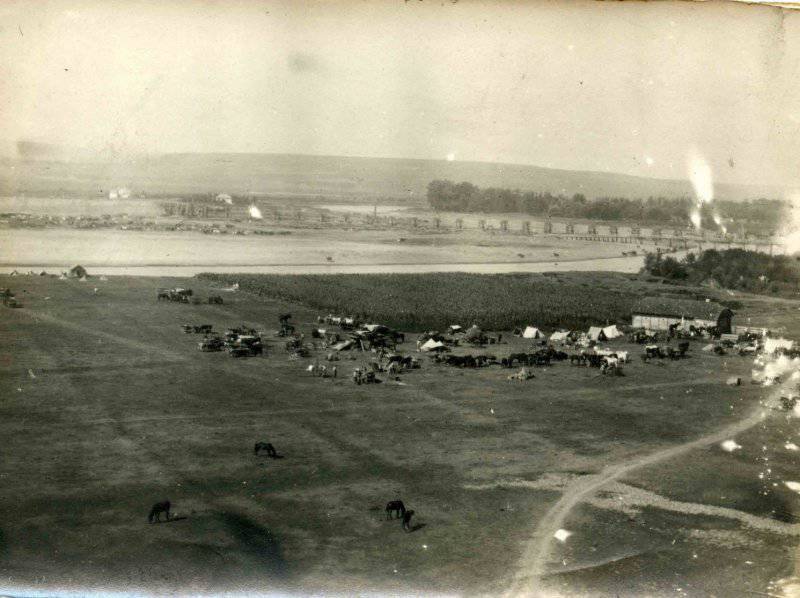
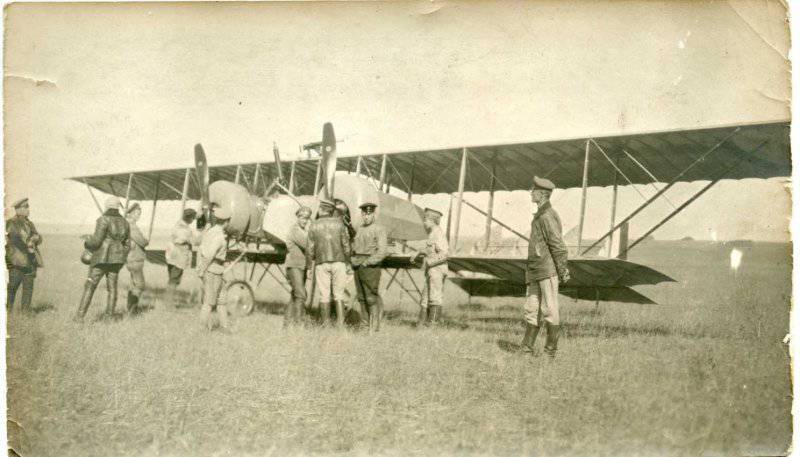
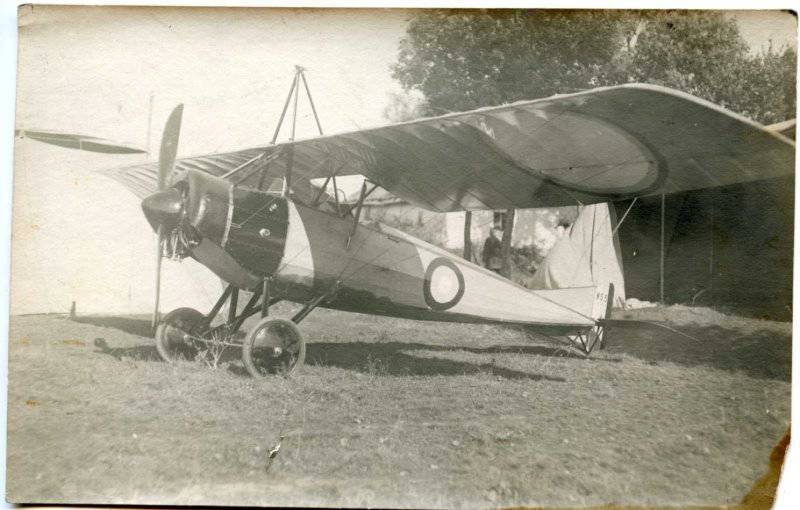
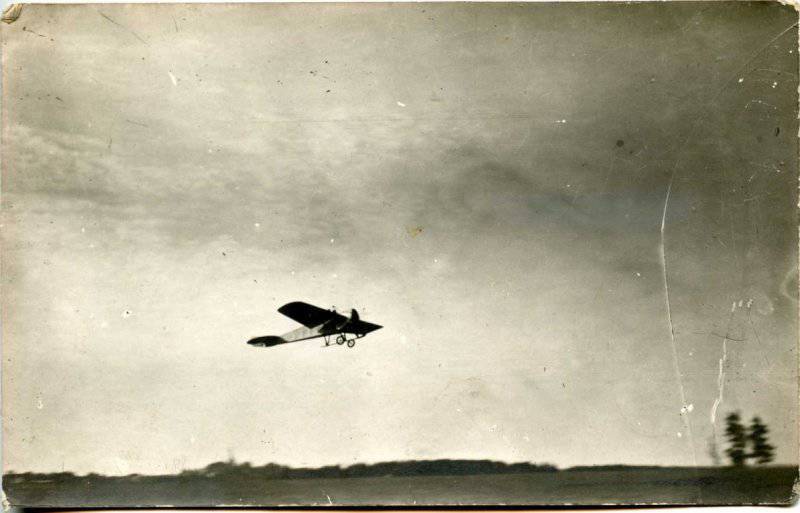
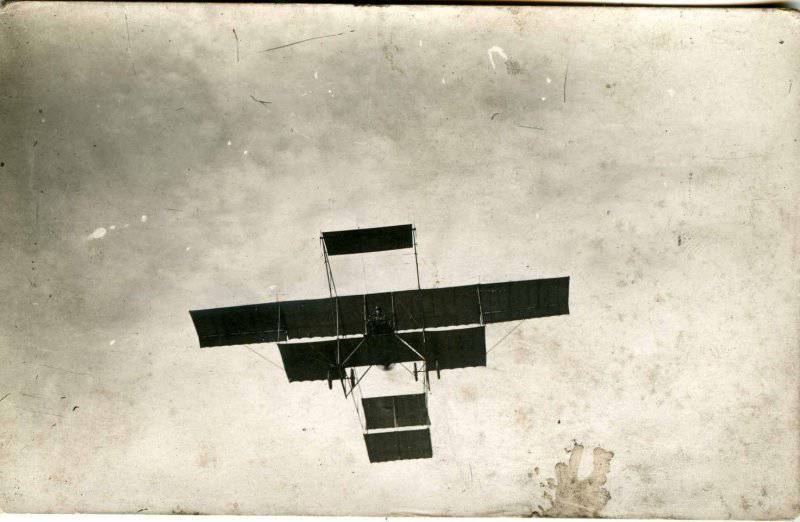
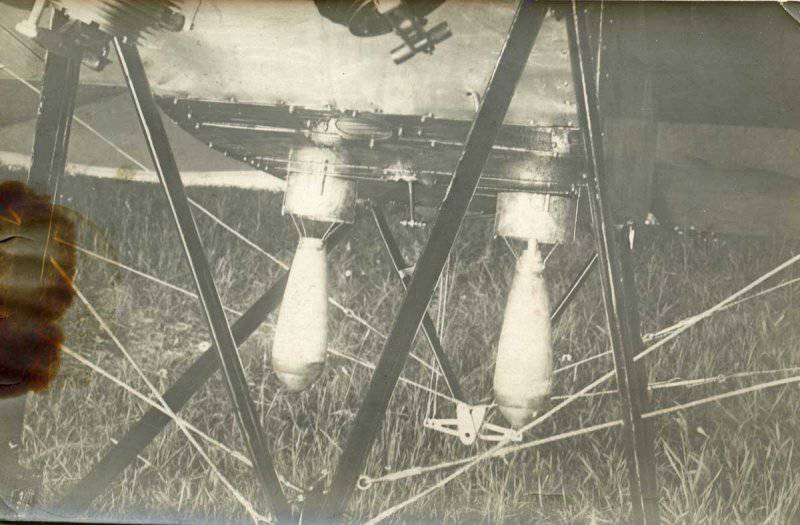
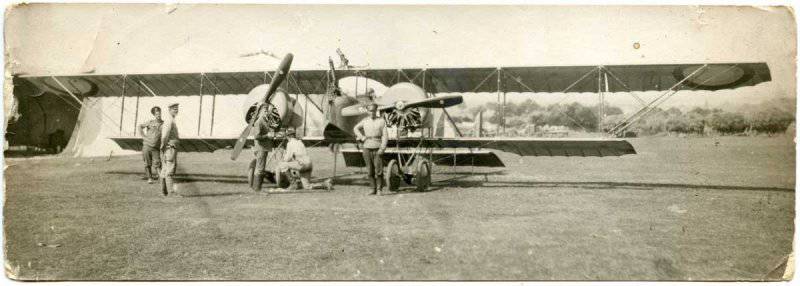
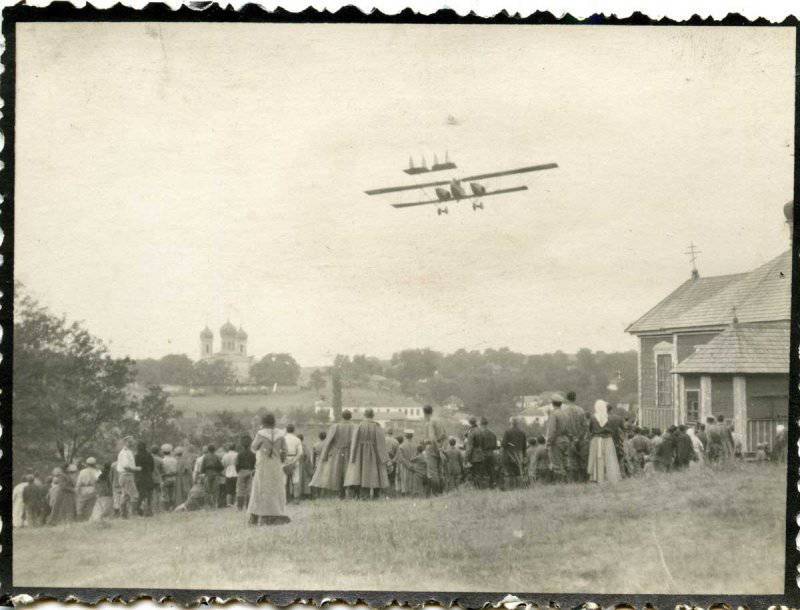
Information